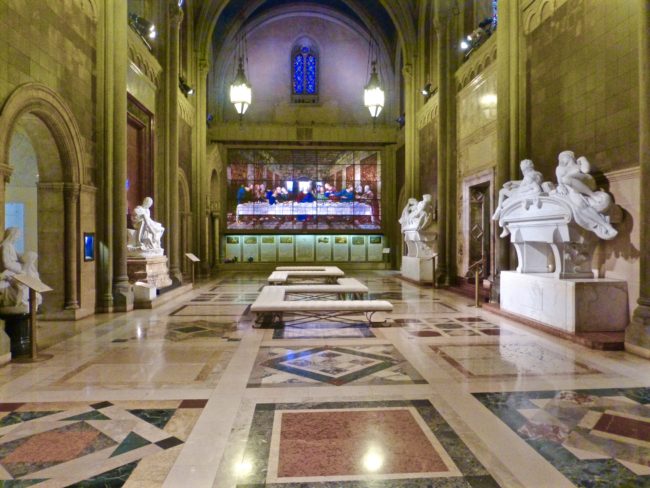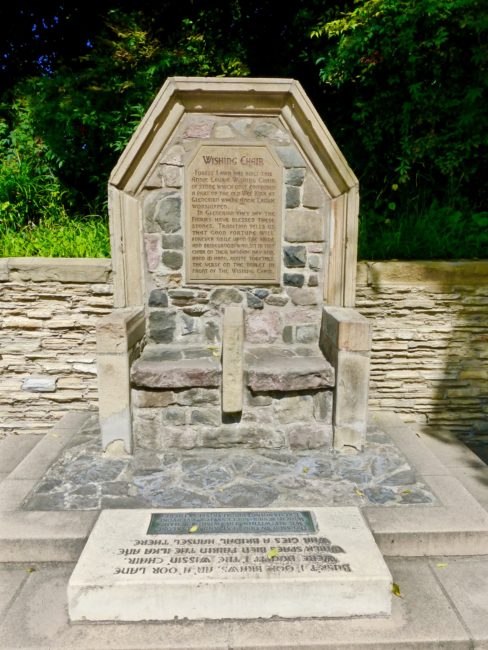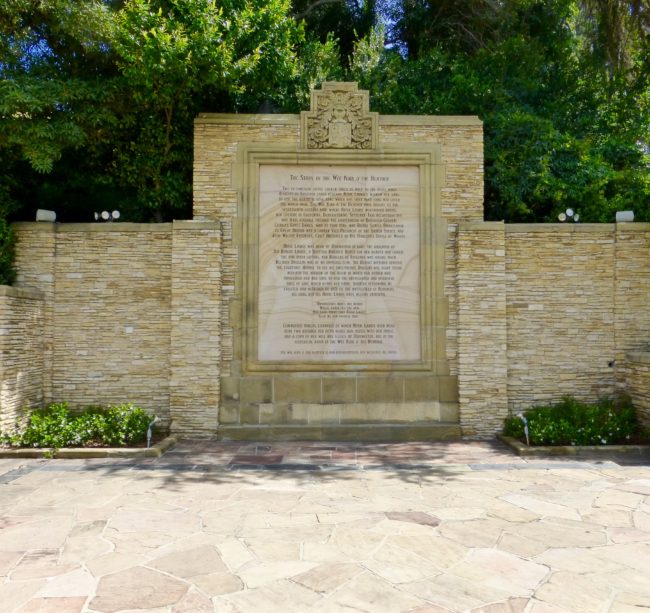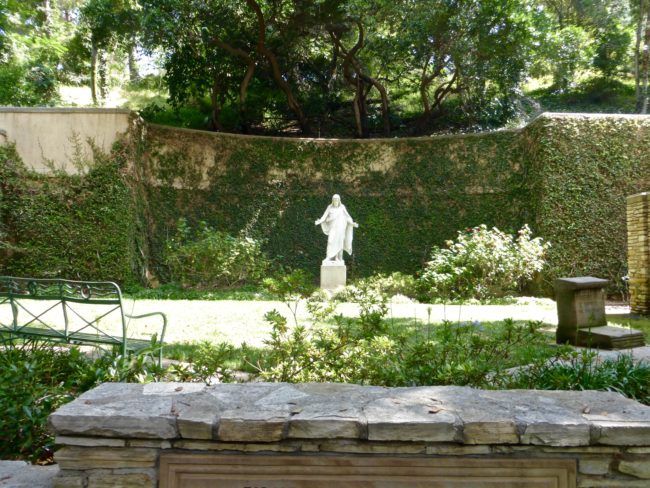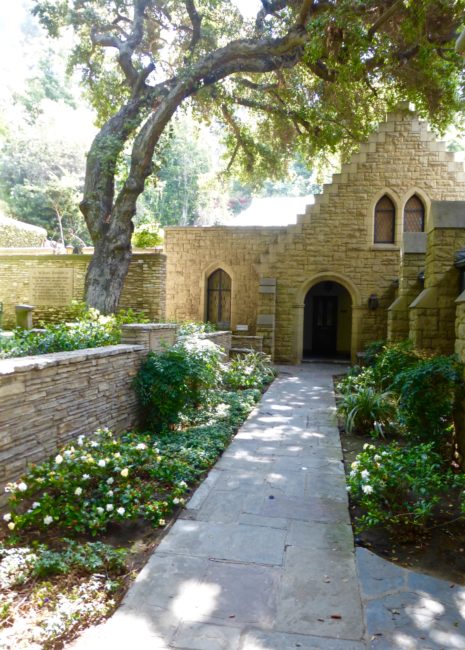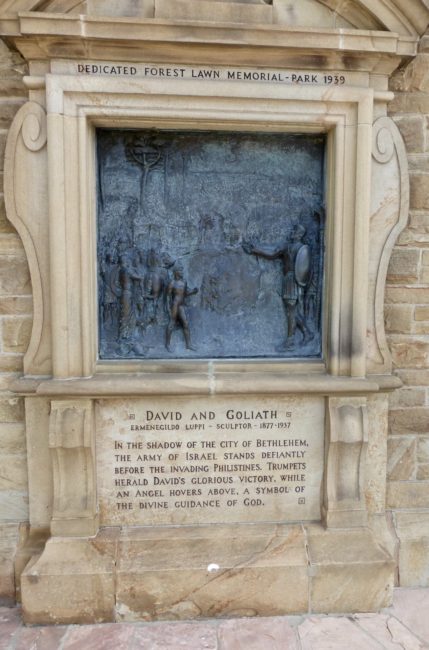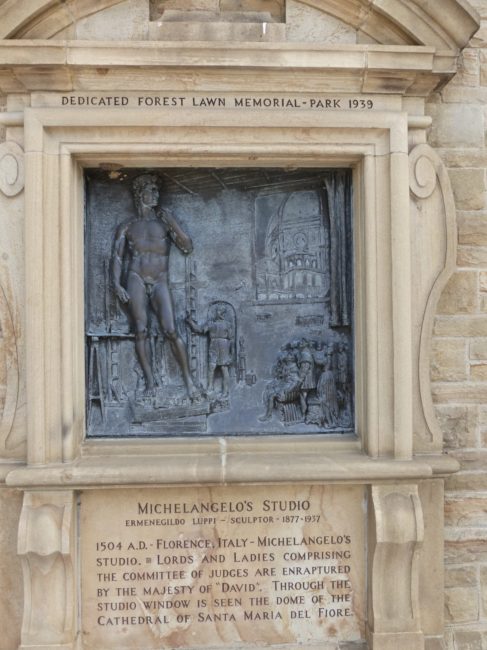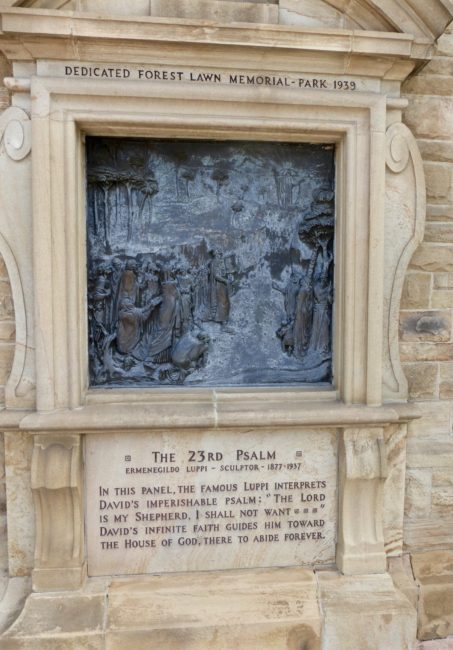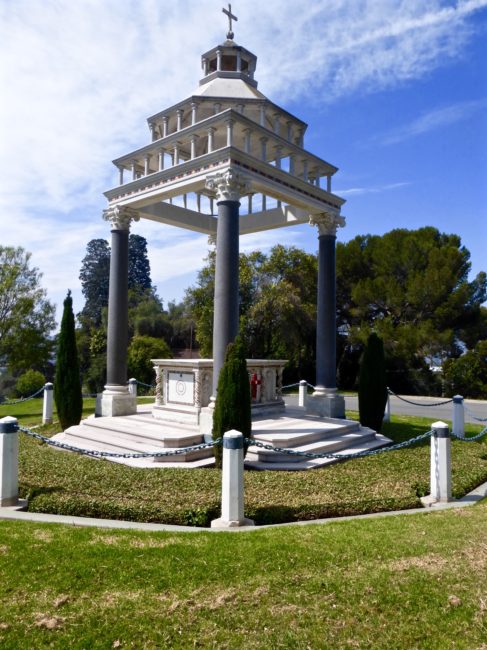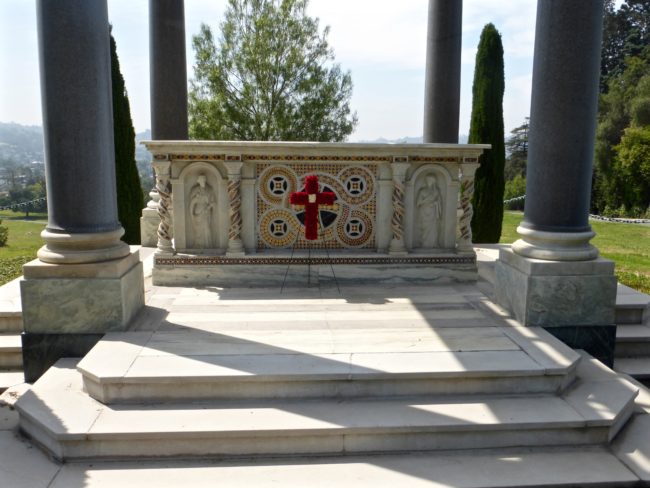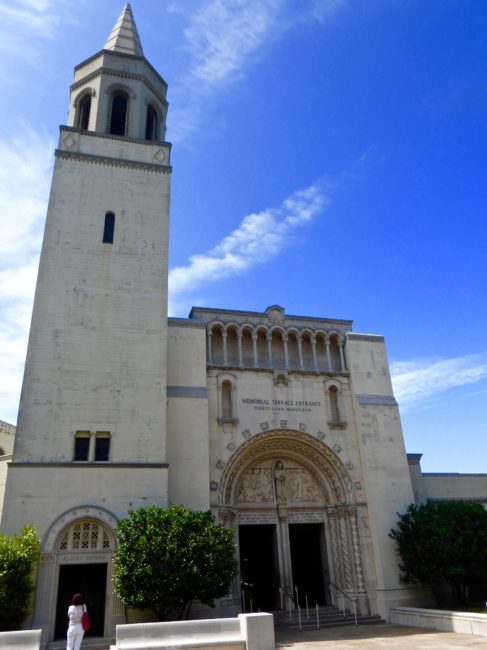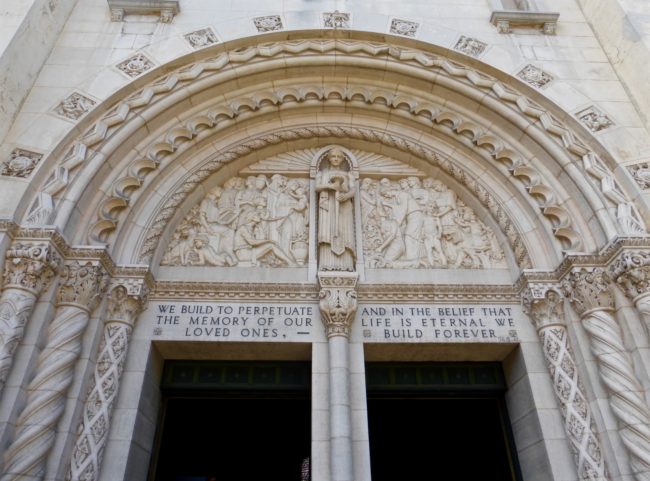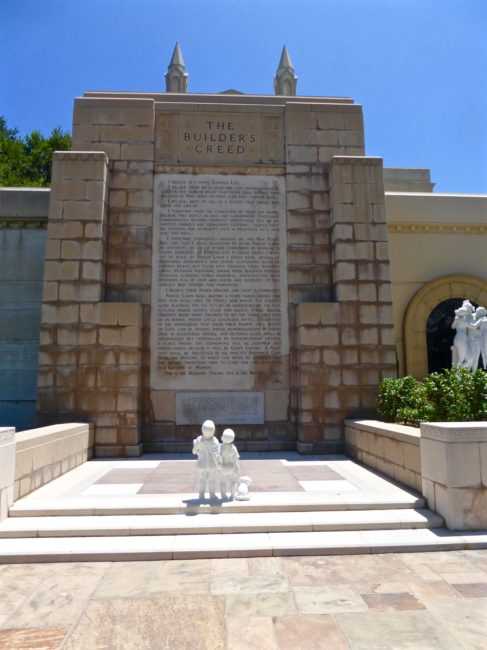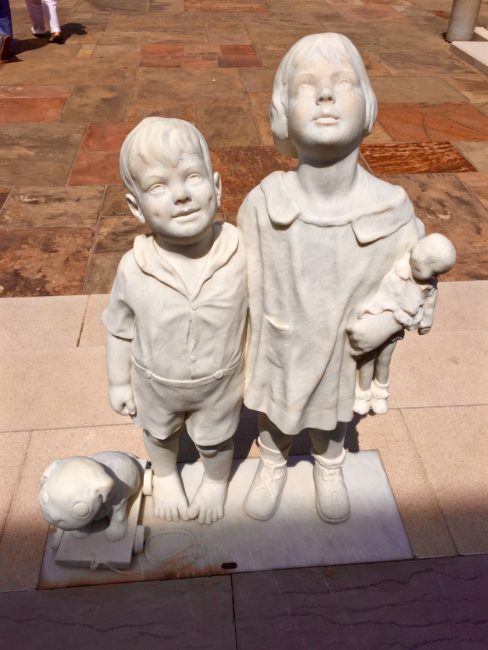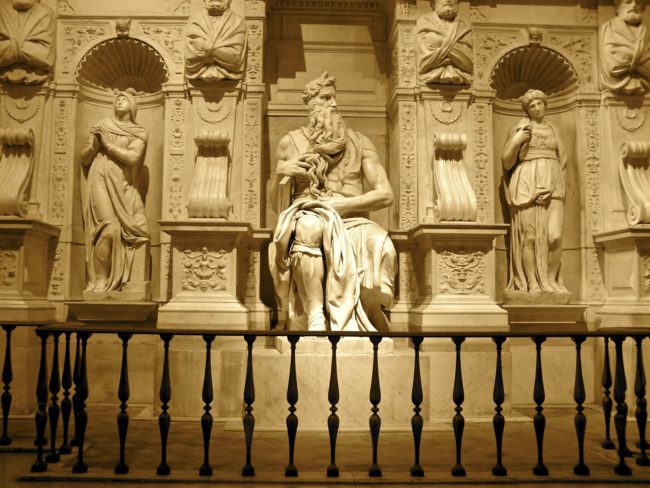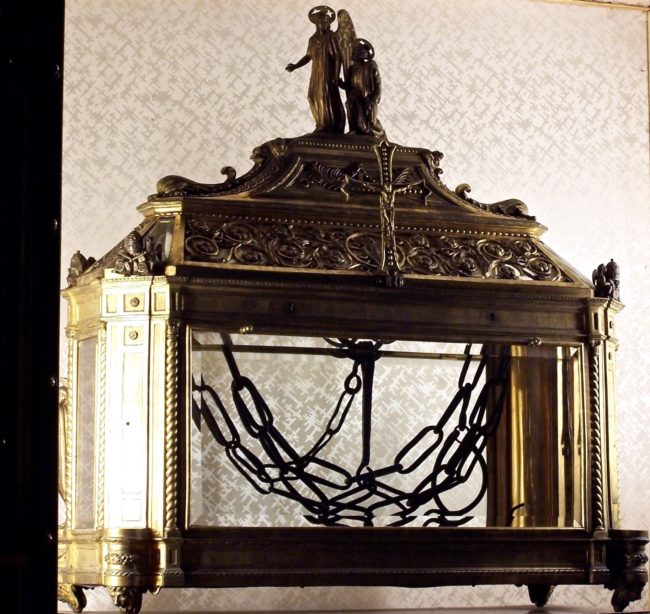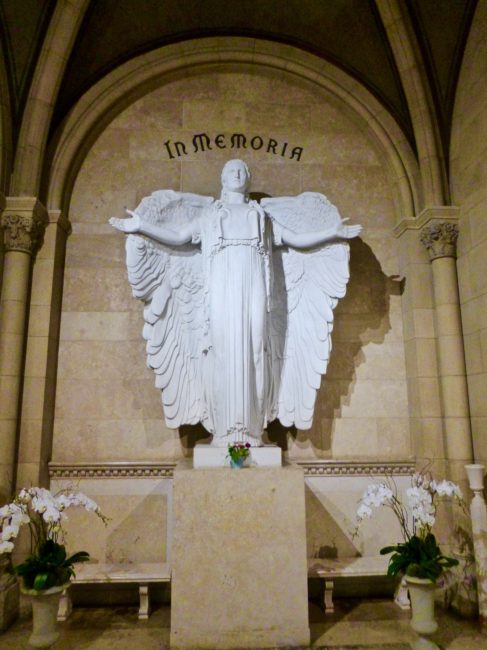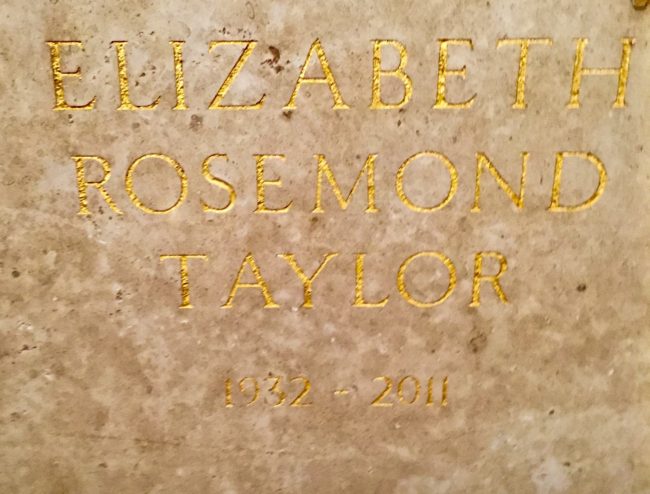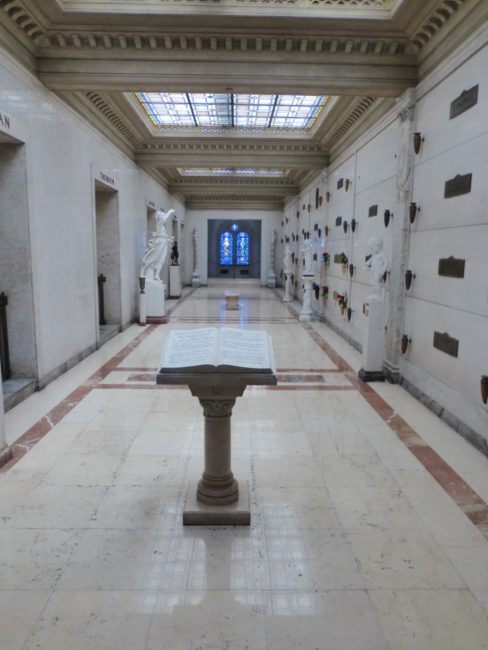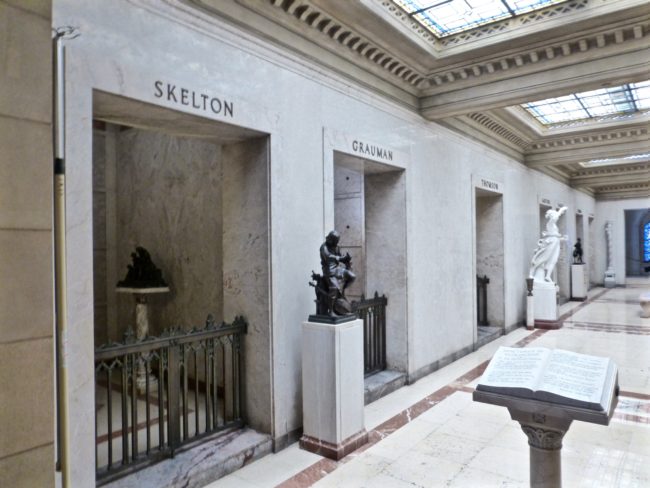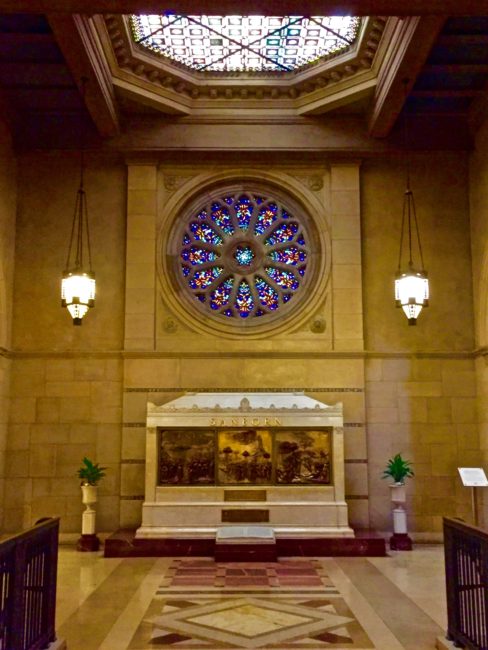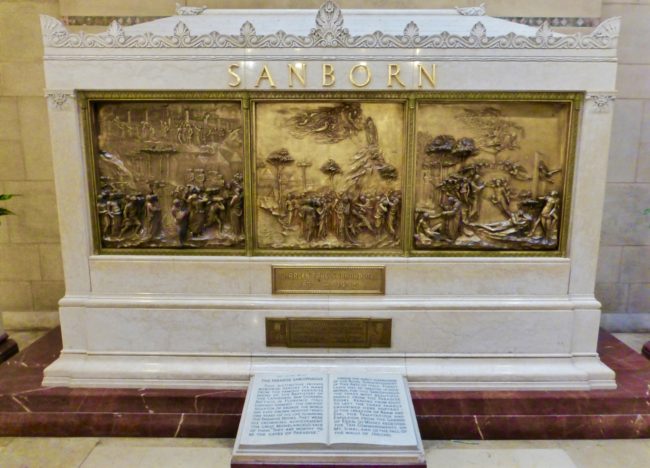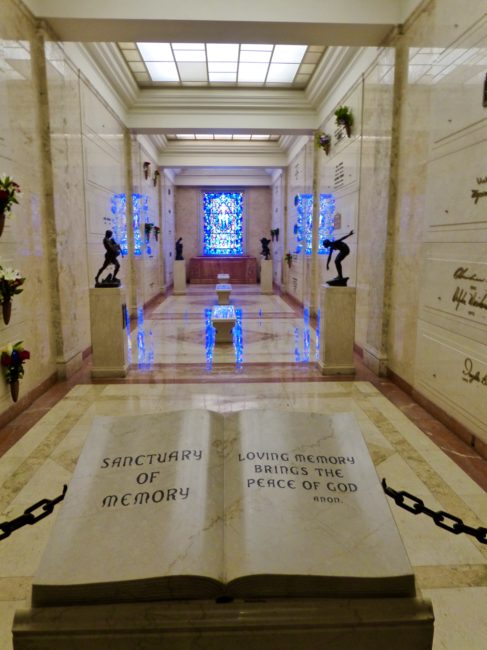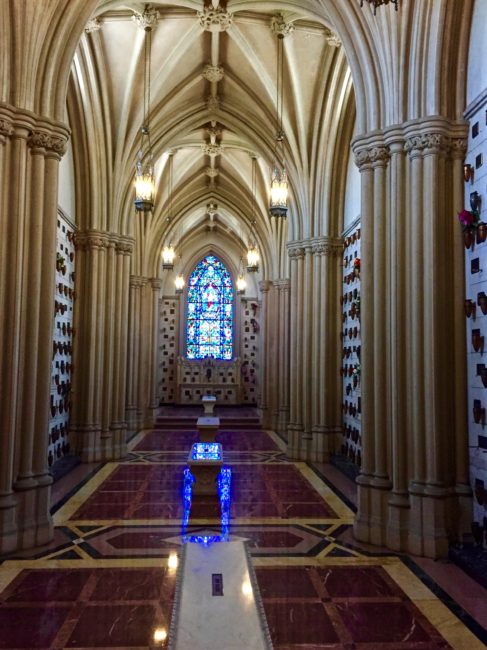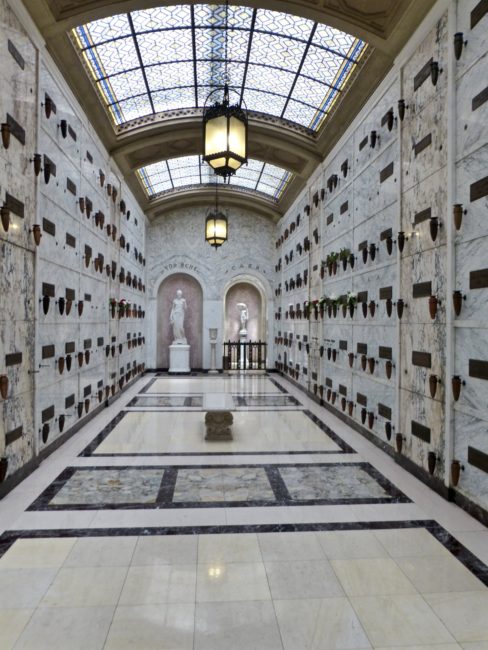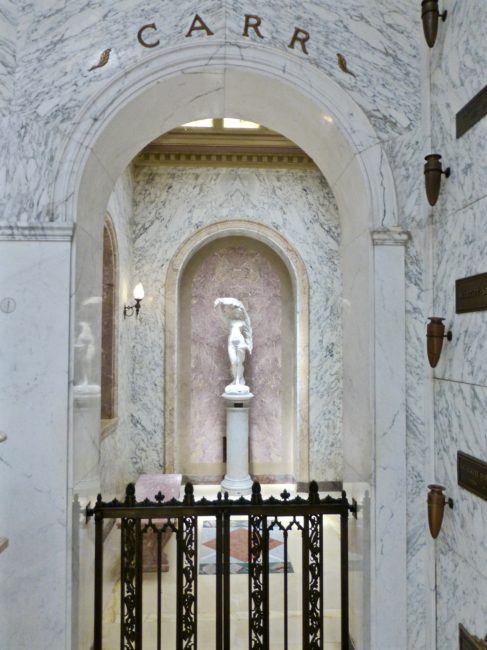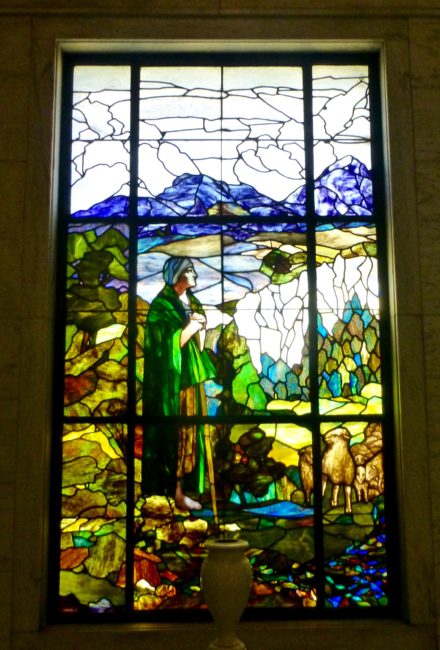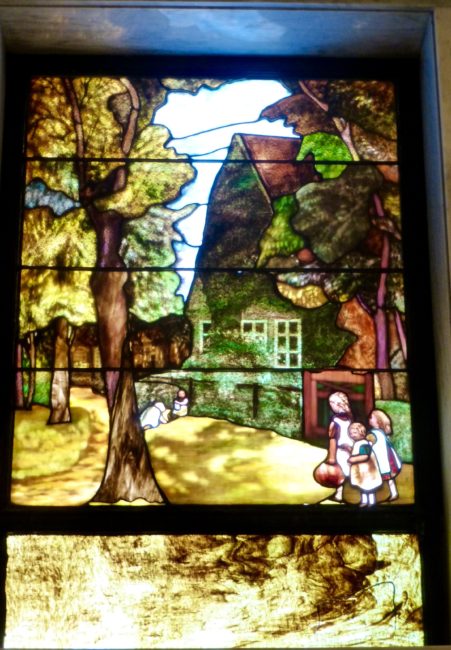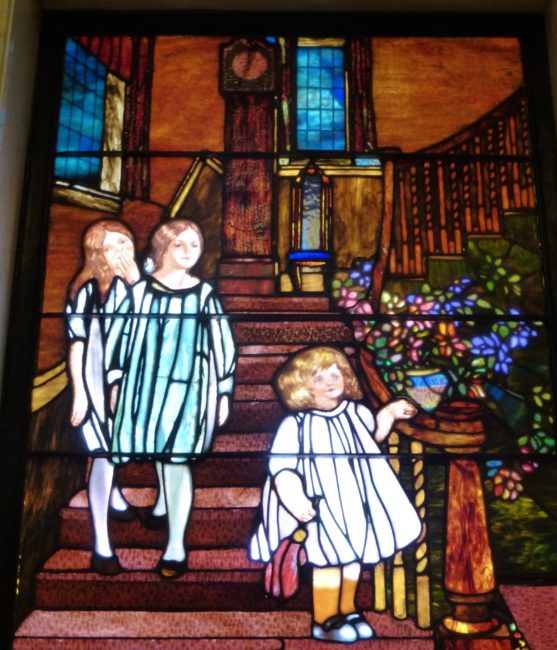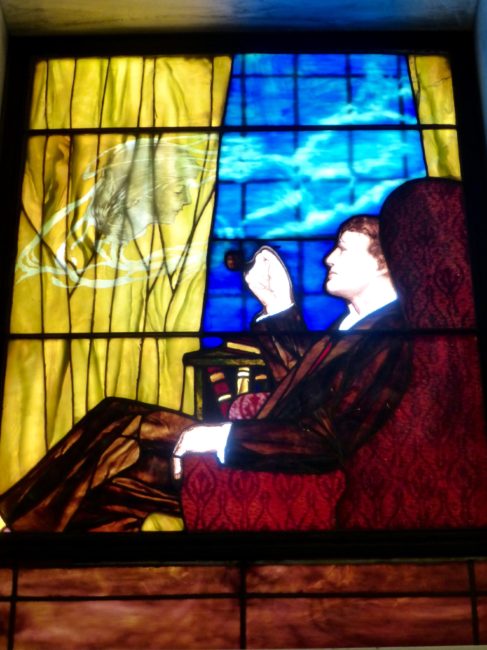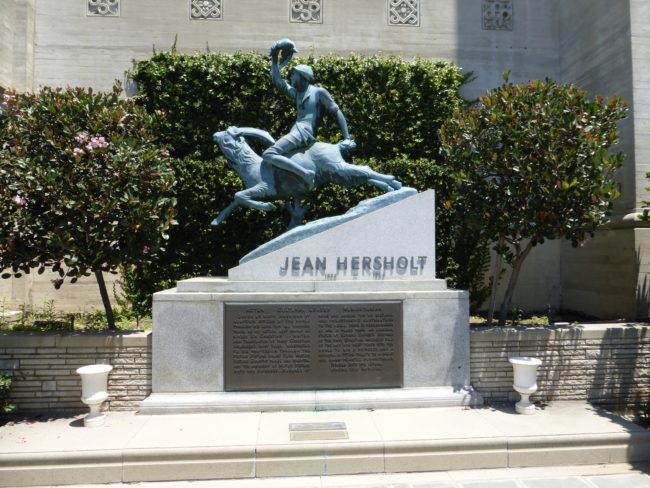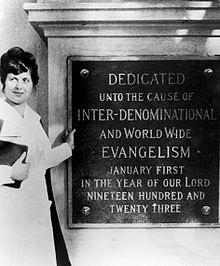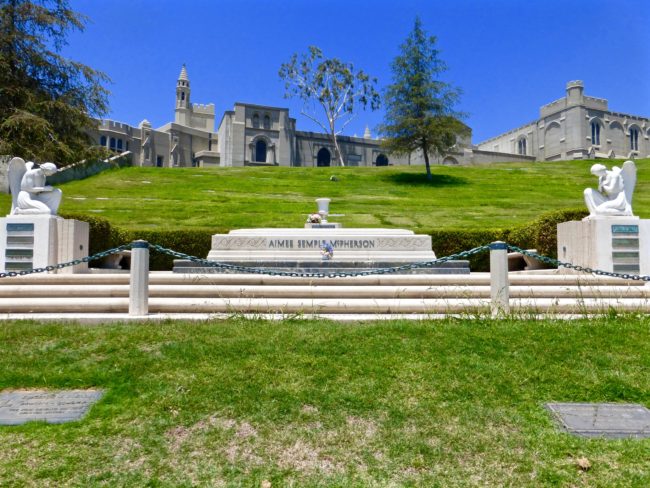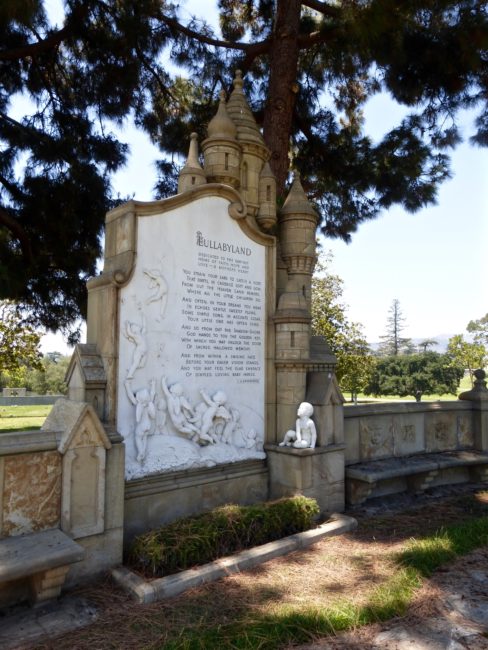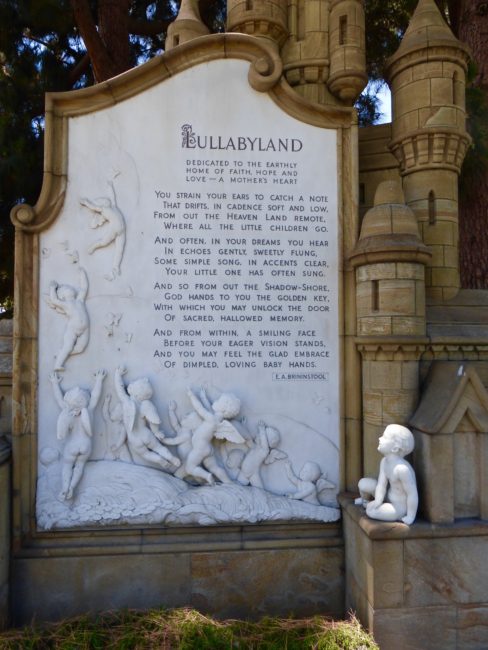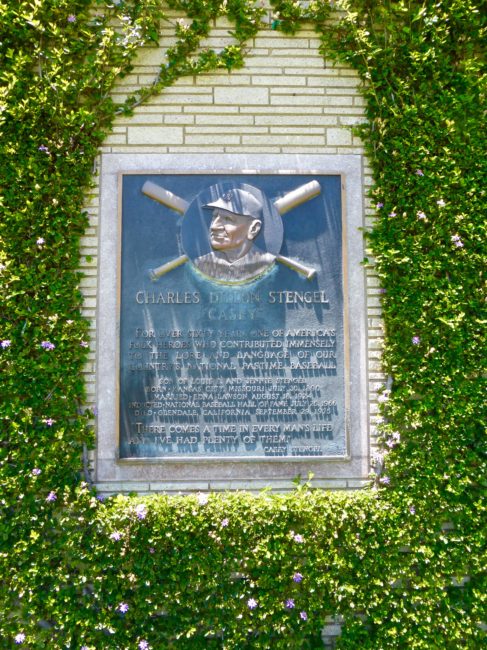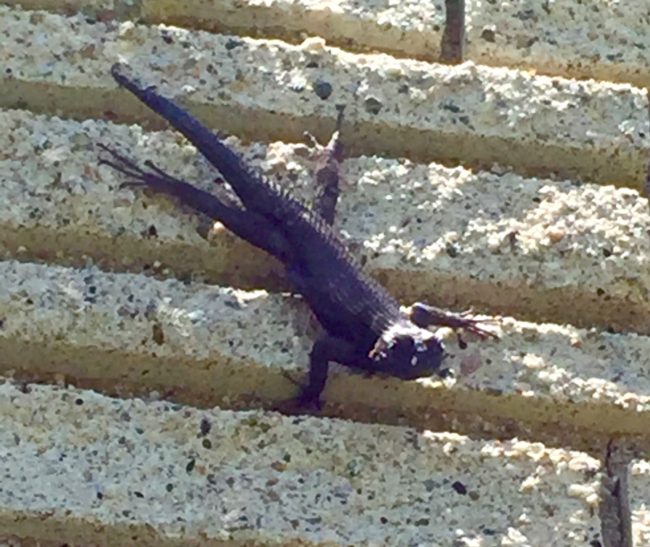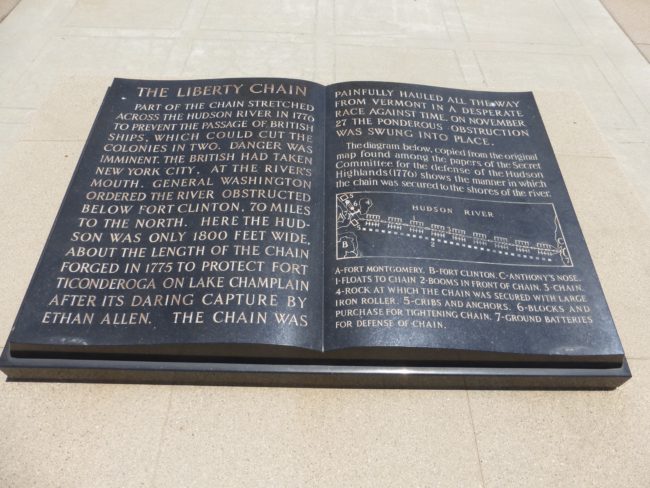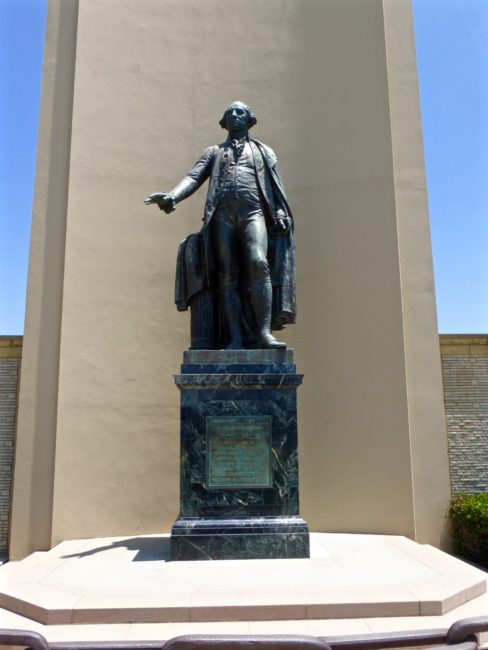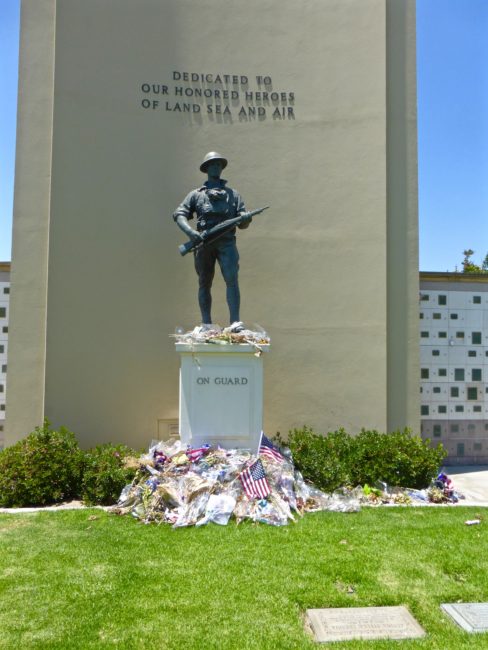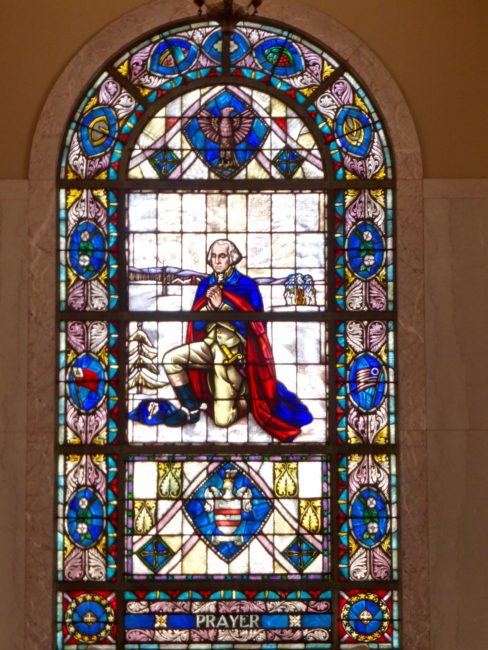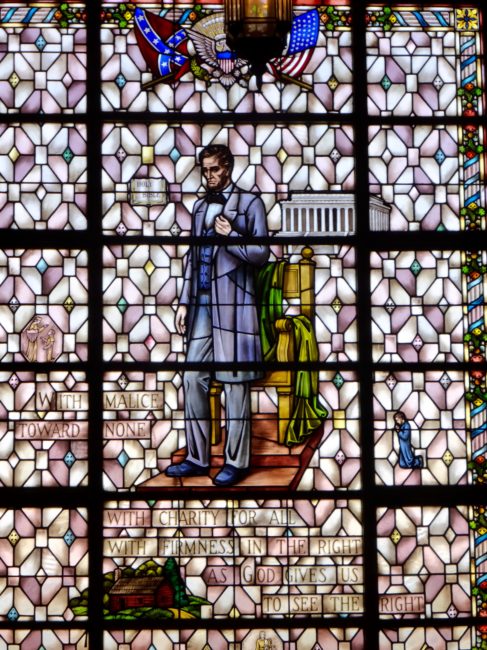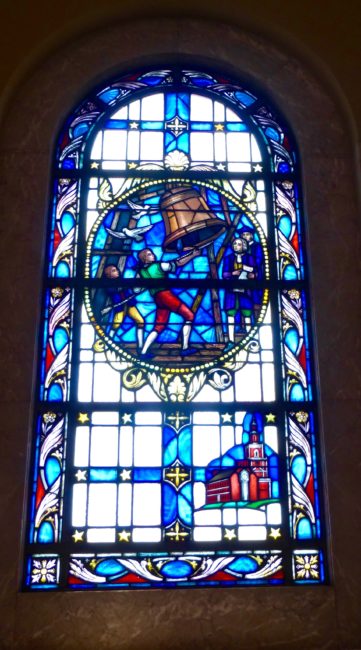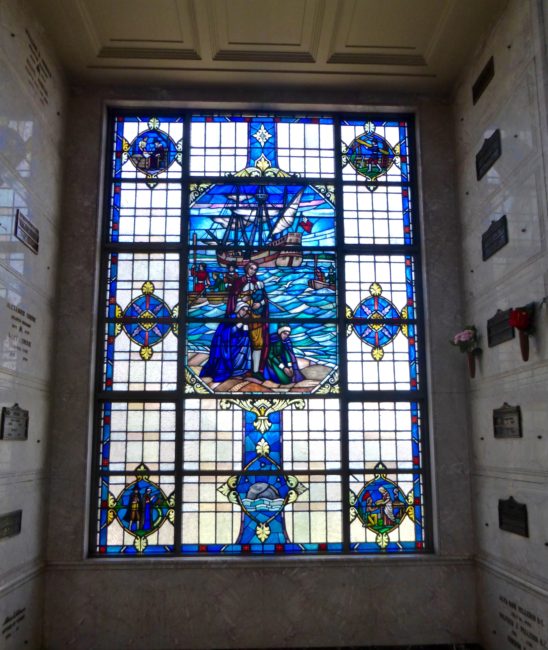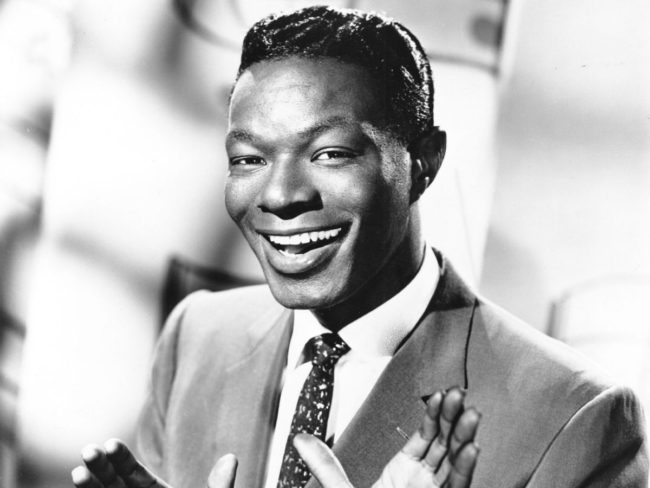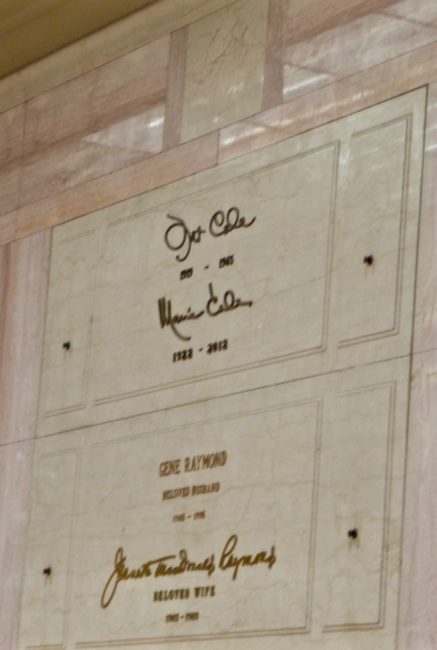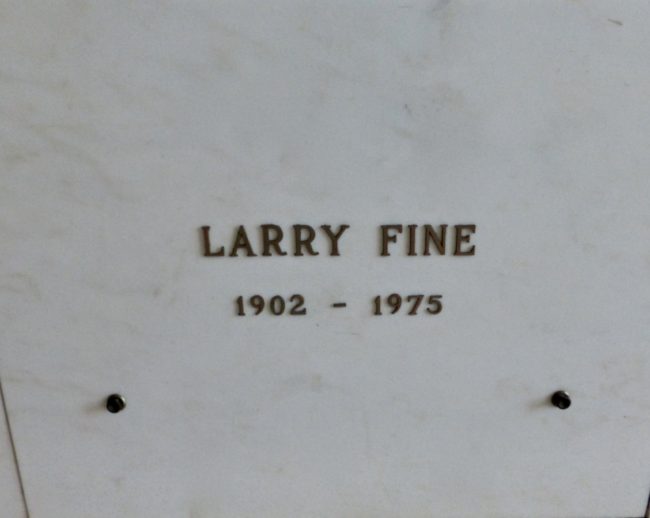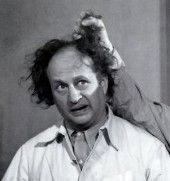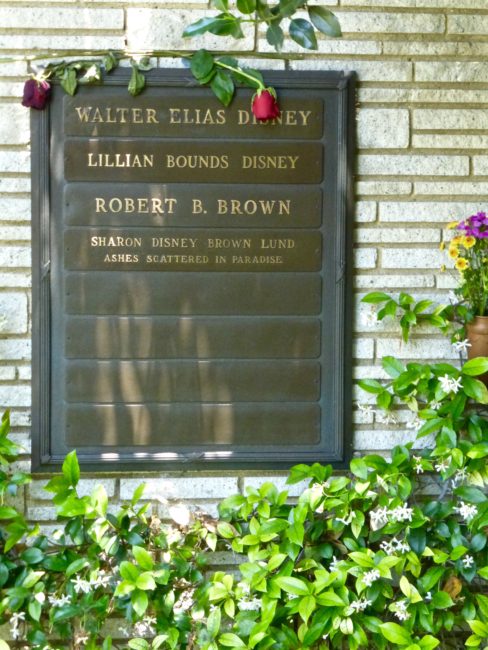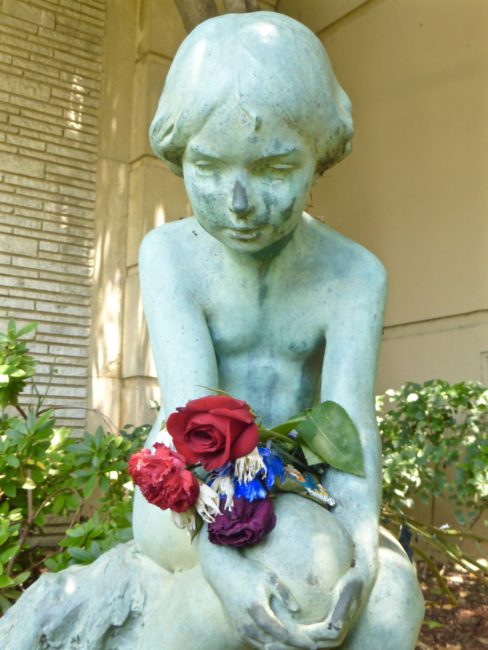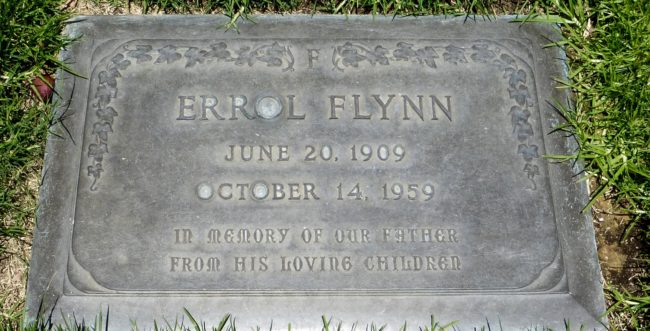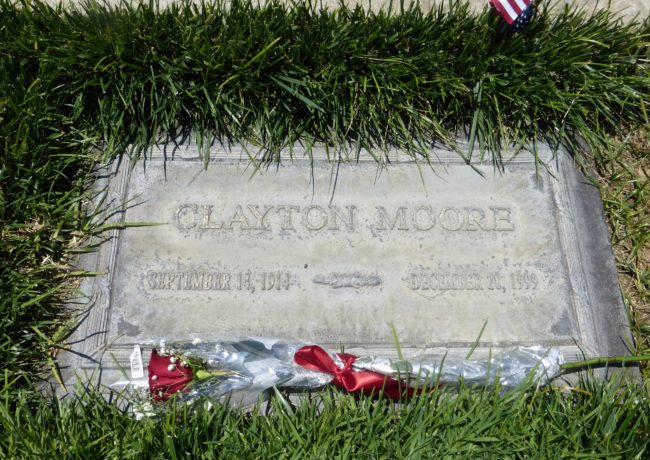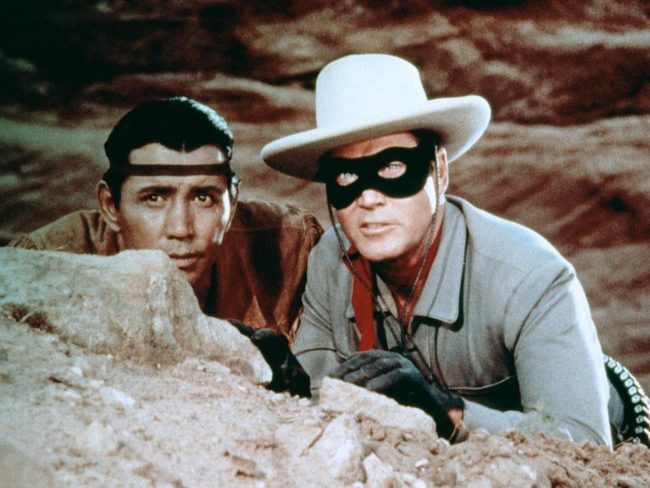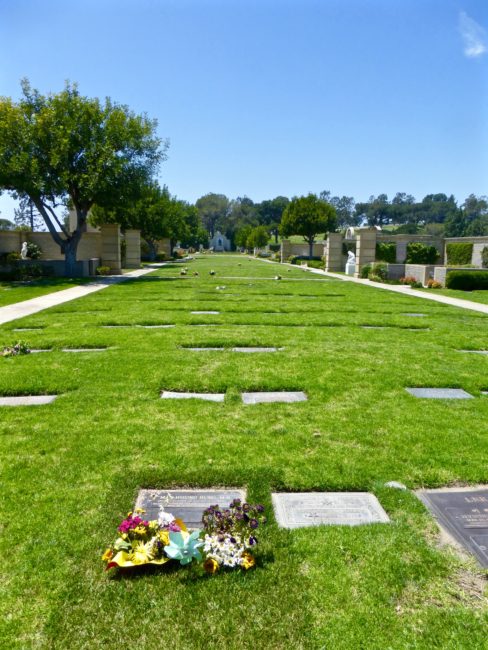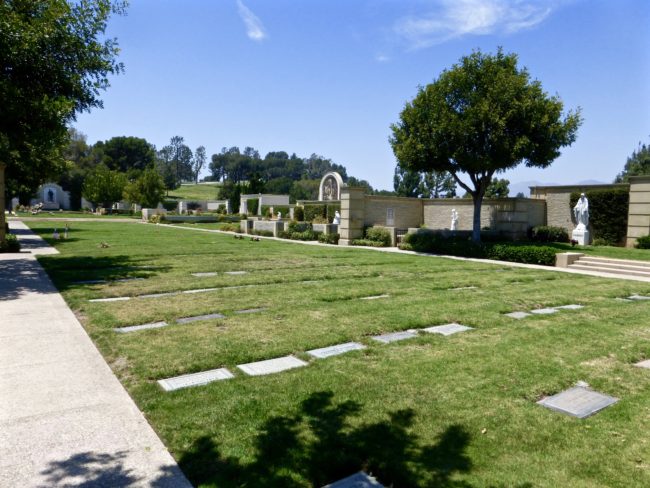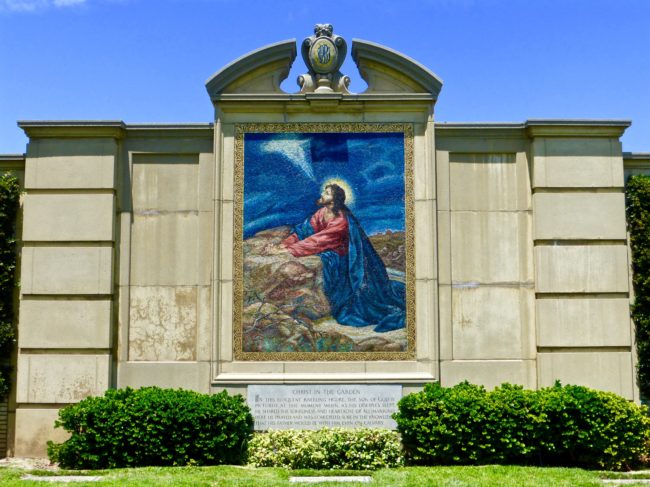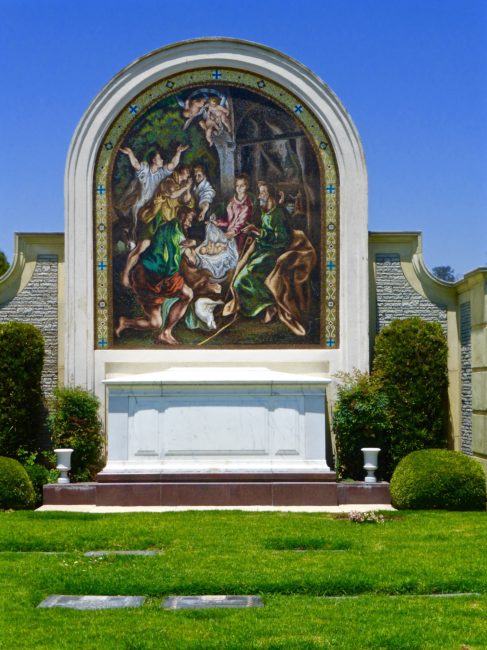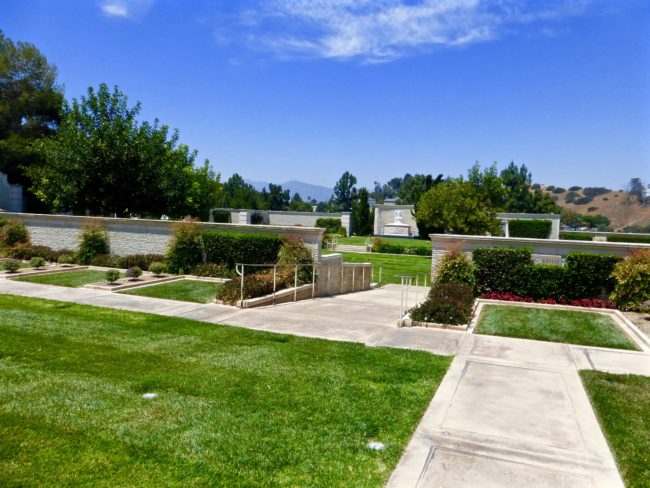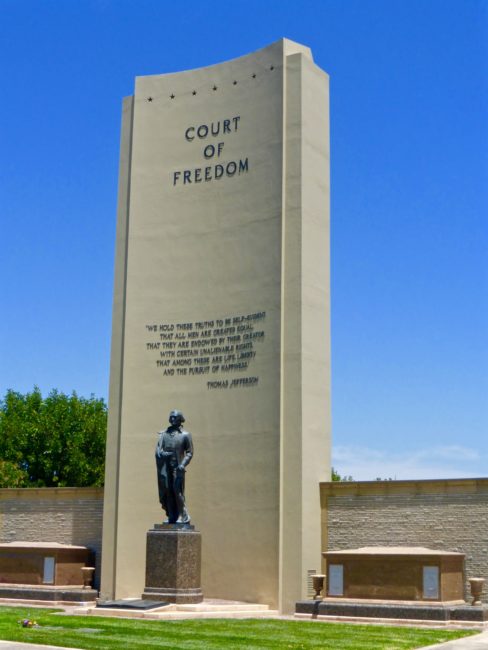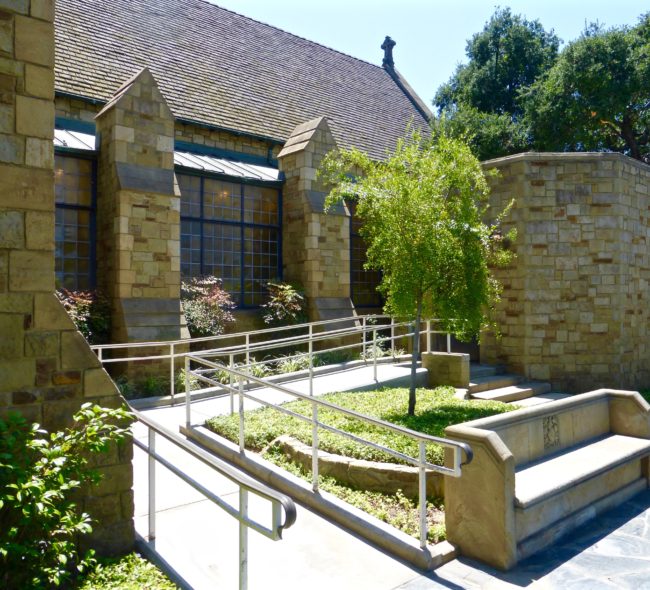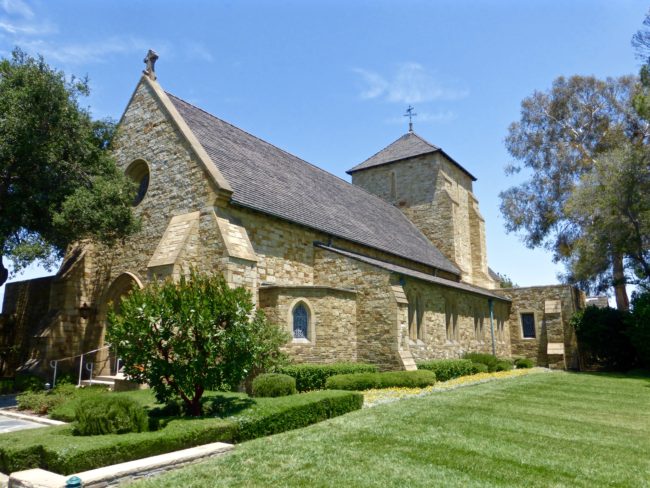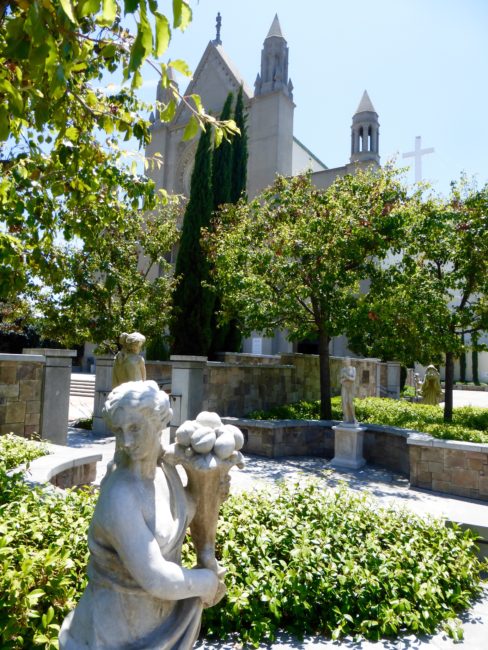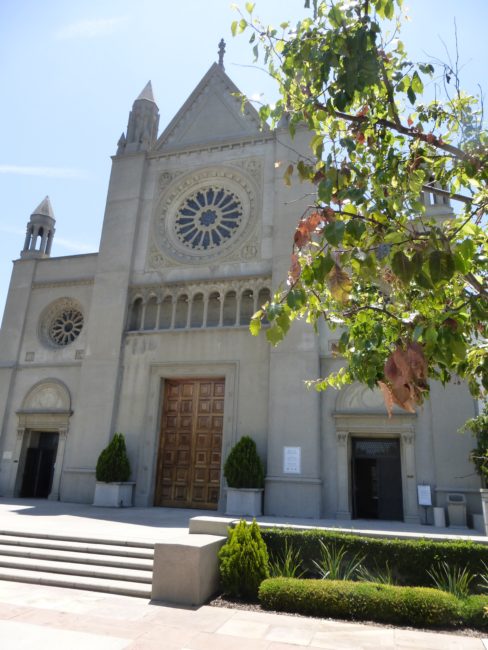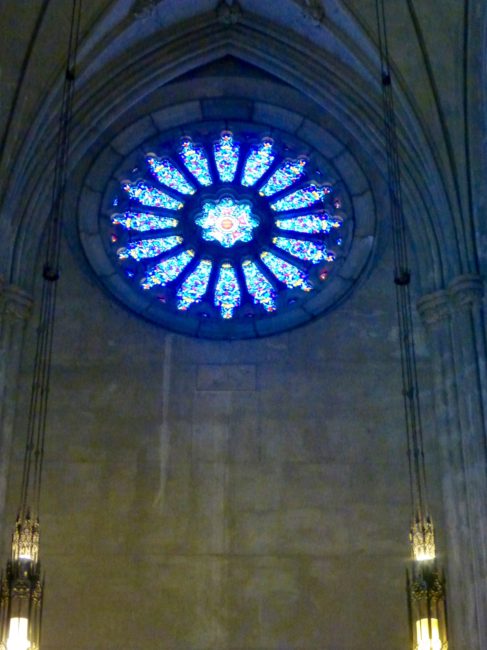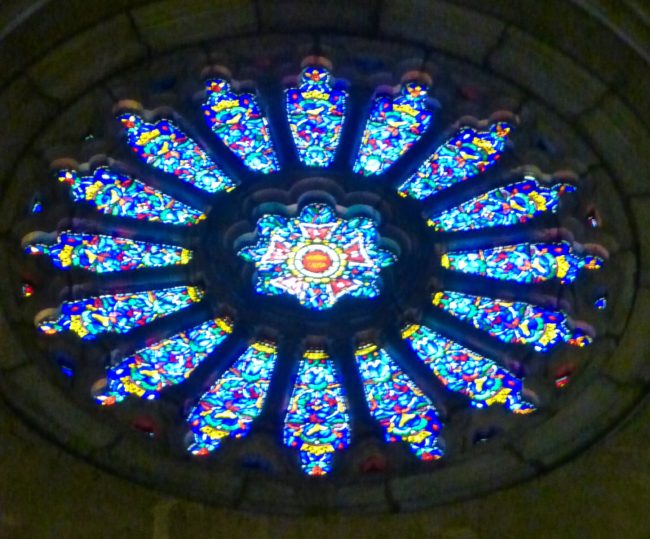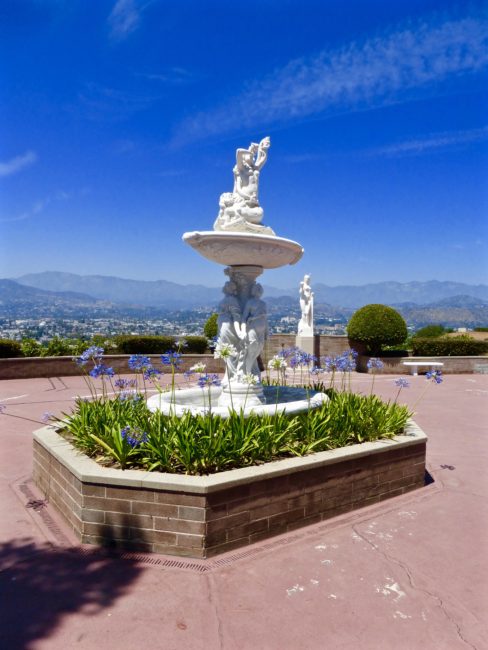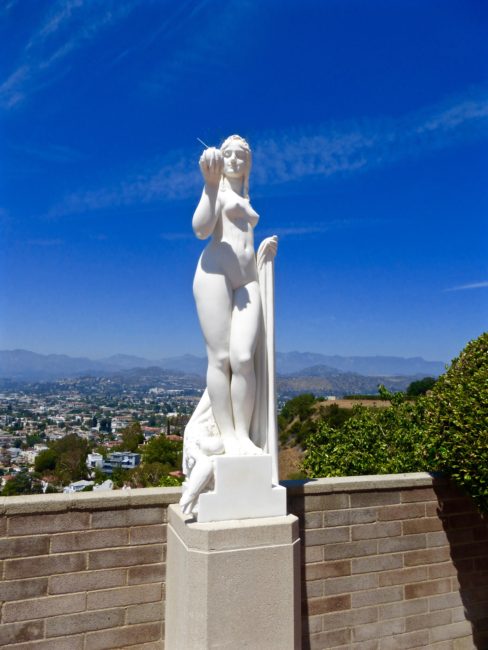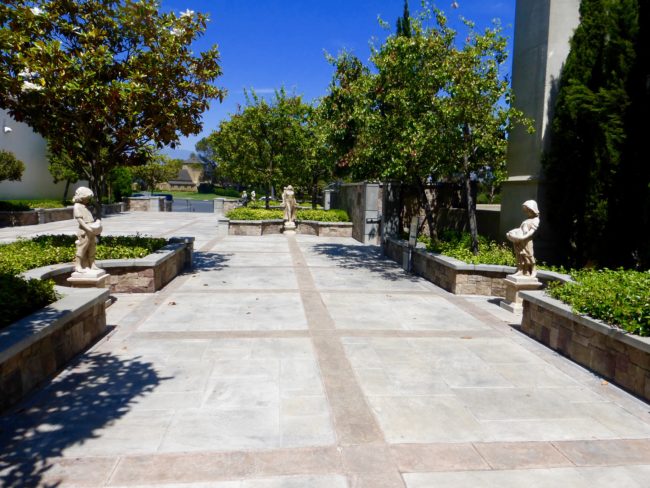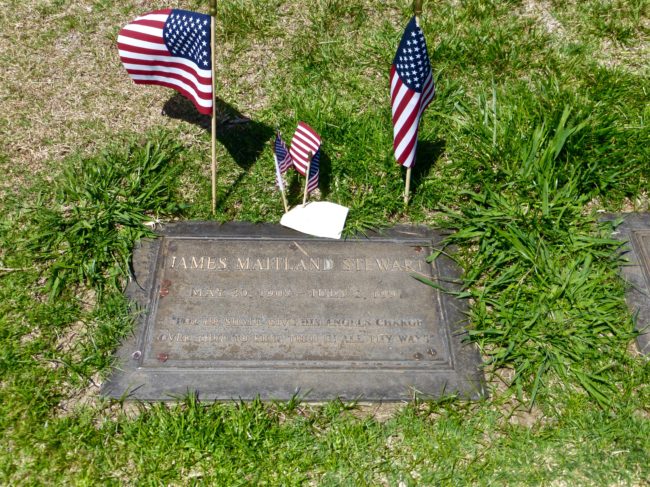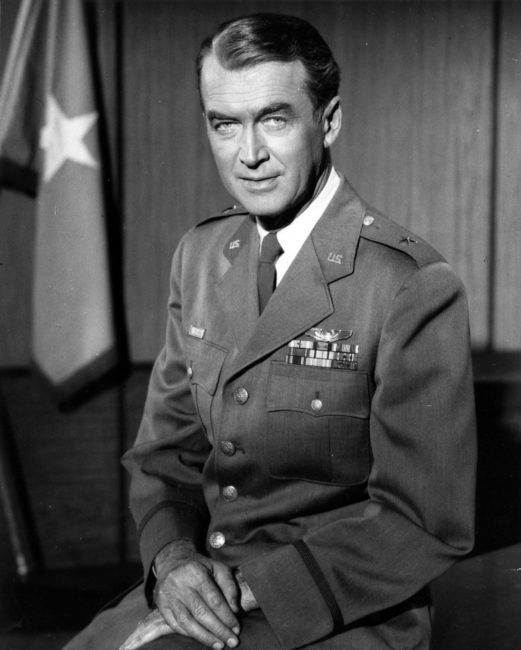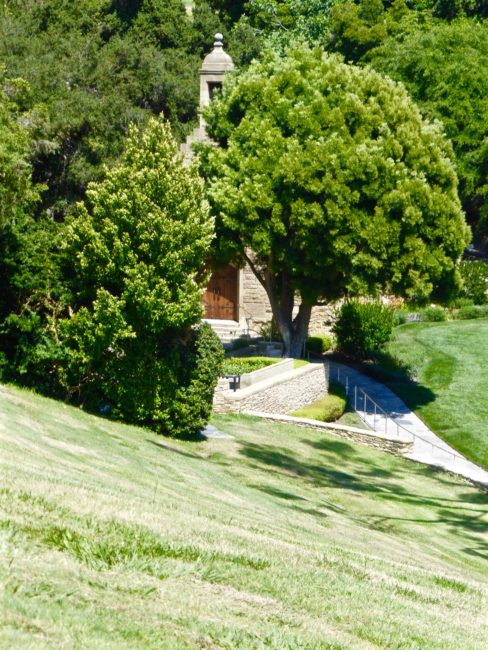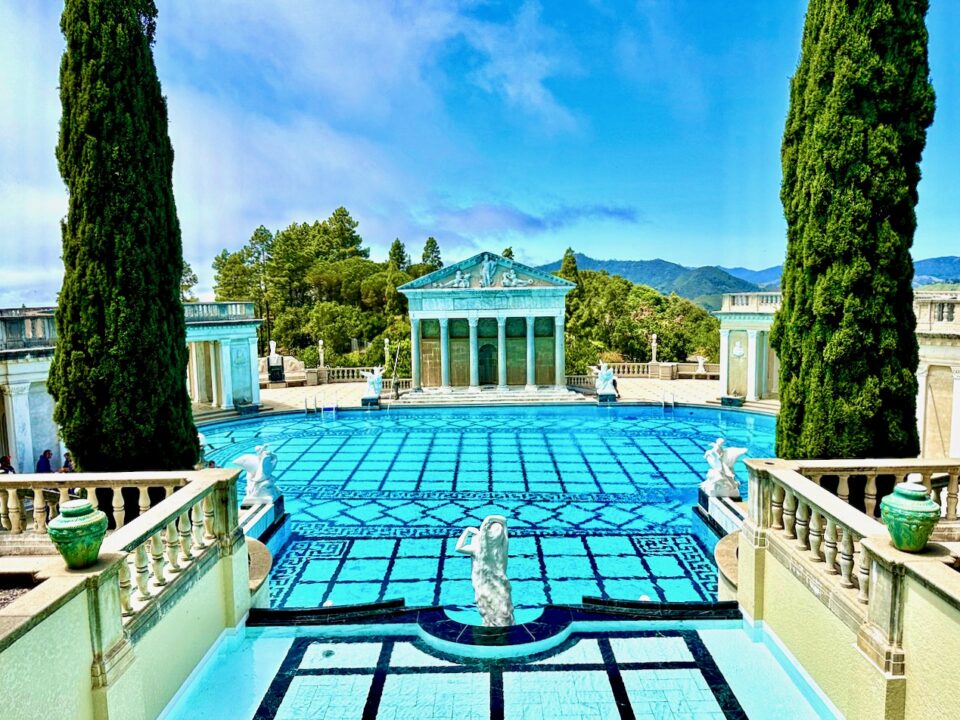
Jack London State Historic Park – Glen Ellen
June 2, 2016
Walt Disney Family Museum – San Francisco
June 28, 2016The Great Mausoleum Art Tour…and much, much more
Visited: June 2016
How is it possible to witness some of the world’s greatest art masterpieces located in Rome, Florence and Milan in the span of just a little more than an hour? Easy…just visit the cemetery. Well, not any cemetery, but Forest Lawn in Glendale.
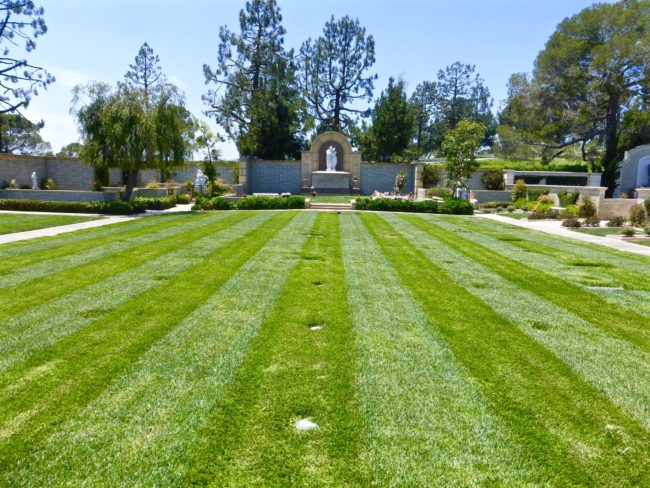 Tracy and I hopped in the car for the short ride to Forest Lawn and its Great Mausoleum Art Tour on a Sunday morning. Our one-hour art tour turned into a four-hour trek around Forest Lawn where we would also visit a number of renowned celebrities (dead, of course), a famous statue (or two, or three), a couple of gorgeous churches, and then ending our day by seeing the largest religious painting in the Western Hemisphere.
Tracy and I hopped in the car for the short ride to Forest Lawn and its Great Mausoleum Art Tour on a Sunday morning. Our one-hour art tour turned into a four-hour trek around Forest Lawn where we would also visit a number of renowned celebrities (dead, of course), a famous statue (or two, or three), a couple of gorgeous churches, and then ending our day by seeing the largest religious painting in the Western Hemisphere.
Forest Lawn Glendale, founded in 1906, now encompasses 300 acres. More than 250,000 people call this their final resting place. Dr. Hubert Eaton (below), who entered a contract in 1912 to manage Forest Lawn, not only envisioned this as a peaceful spot for the dearly departed, but also as “a place for the living.”
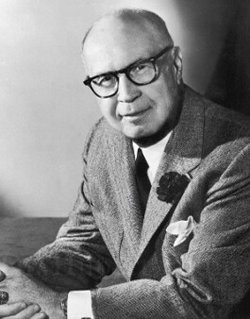 All around Forest Lawn you’ll see incredible architecture, beautifully manicured lawns and a vast array of fabulous art due mainly to Eaton’s love of art collecting. There are something in the neighborhood of 1,600 art pieces on the property (don’t worry, we didn’t see them all). In the early days, Forest Lawn was quite the tourist destination, and there were even talking statues. They’ve toned down the act, but there are still an incredible amount of things to see here.
All around Forest Lawn you’ll see incredible architecture, beautifully manicured lawns and a vast array of fabulous art due mainly to Eaton’s love of art collecting. There are something in the neighborhood of 1,600 art pieces on the property (don’t worry, we didn’t see them all). In the early days, Forest Lawn was quite the tourist destination, and there were even talking statues. They’ve toned down the act, but there are still an incredible amount of things to see here.
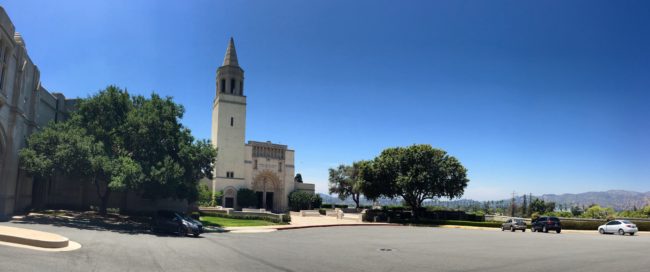 Since we arrived early for the tour, Tracy and I decided to drive around the property a little bit. After going through (well, they were open fortunately) what are said to be “the world’s largest wrought-iron gates” (photo below courtesy of findagrave.com)…
Since we arrived early for the tour, Tracy and I decided to drive around the property a little bit. After going through (well, they were open fortunately) what are said to be “the world’s largest wrought-iron gates” (photo below courtesy of findagrave.com)…
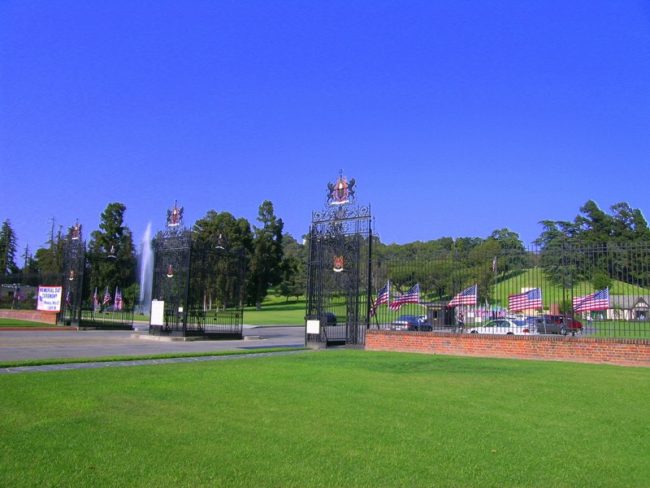 … and receiving a map at the entrance, we passed by The Finding of Moses by Brazza, copied from the original in Pincio Garden of Rome. It was installed here in the 1920s.
… and receiving a map at the entrance, we passed by The Finding of Moses by Brazza, copied from the original in Pincio Garden of Rome. It was installed here in the 1920s.
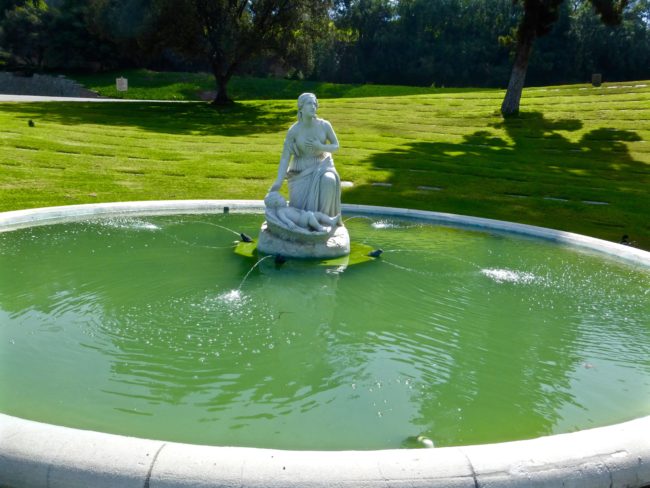 Our first stop was the Wee Kirk o’ the Heather, a church patterned after a 14th century Scottish Church located near Glencairn.
Our first stop was the Wee Kirk o’ the Heather, a church patterned after a 14th century Scottish Church located near Glencairn.
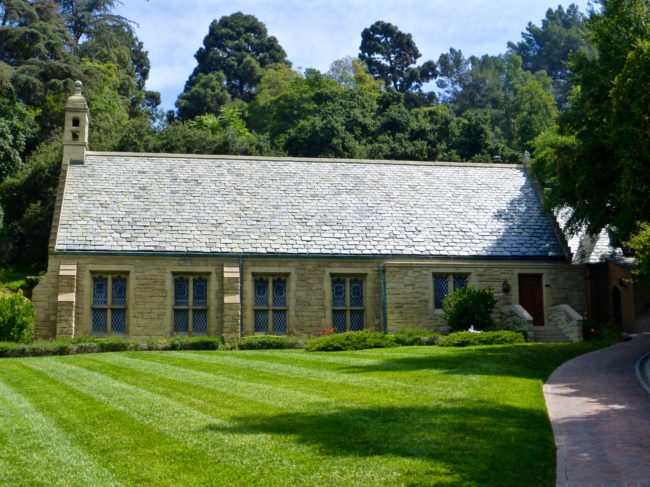 This is the church where Ronald Reagan was married…to his first wife, actress Jane Wyman, in 1940.
This is the church where Ronald Reagan was married…to his first wife, actress Jane Wyman, in 1940.
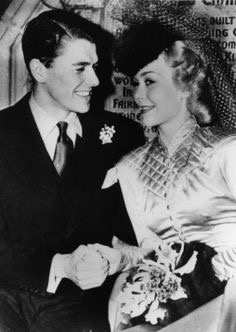 The Wishing Chair is constructed with stones from a church in Scotland. Tradition supposedly states that “fairies have blessed these stones, and that fortune will forever smile on the bridal pair that sits in this seat on the wedding day.” Well, it can’t work for every couple.
The Wishing Chair is constructed with stones from a church in Scotland. Tradition supposedly states that “fairies have blessed these stones, and that fortune will forever smile on the bridal pair that sits in this seat on the wedding day.” Well, it can’t work for every couple.
I peeked around the back where there was a lovely, little courtyard…
…and although it said you could enter when services were not going on, it was locked up.
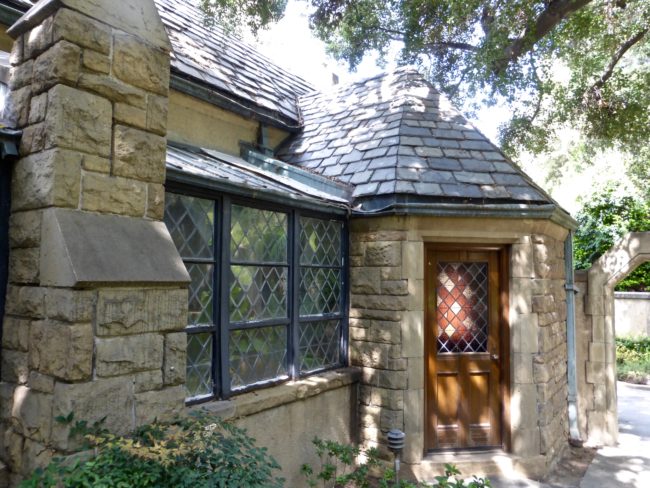 Our next stop was Florence, Italy. Well, not quite. We drove a short distance to the Court of David, where standing magnificently in the center was a reproduction of Michelangelo’s most famous statue.
Our next stop was Florence, Italy. Well, not quite. We drove a short distance to the Court of David, where standing magnificently in the center was a reproduction of Michelangelo’s most famous statue.
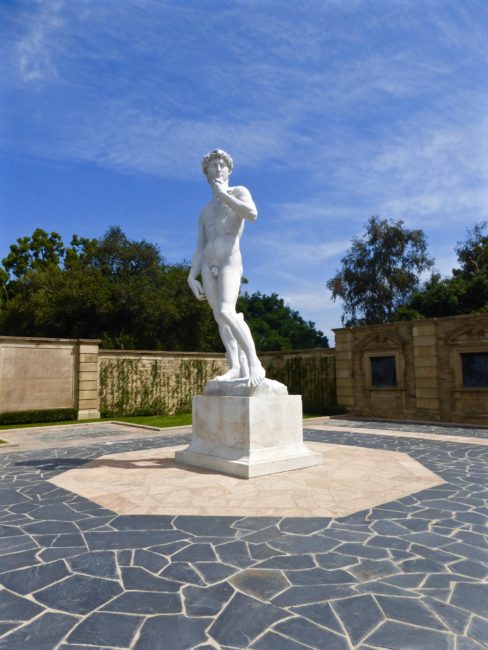 The 17-foot tall Carrara marble statue of David was first unveiled in 1939…with a fig leaf. Two earthquakes (Sylmar in 1971 and Northridge in 1994) have toppled the old boy a couple of times, but he stands tall again today…no fig leaf to be found.
The 17-foot tall Carrara marble statue of David was first unveiled in 1939…with a fig leaf. Two earthquakes (Sylmar in 1971 and Northridge in 1994) have toppled the old boy a couple of times, but he stands tall again today…no fig leaf to be found.
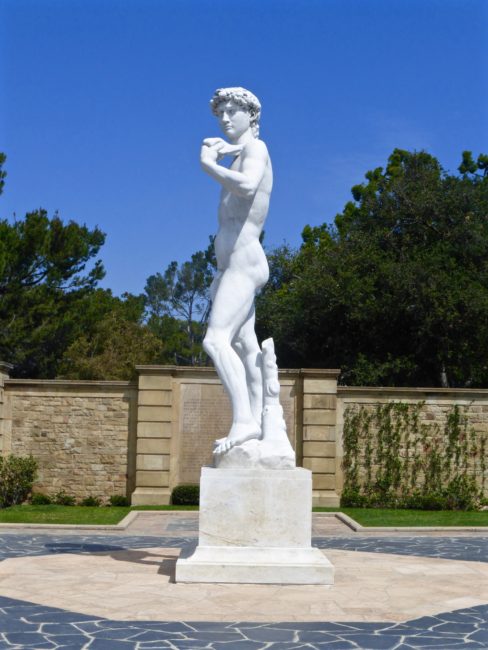 Behind the statue are three bas-reliefs; David & Goliath, Michelangelo’s Studio and The 23rd Psalm.
Behind the statue are three bas-reliefs; David & Goliath, Michelangelo’s Studio and The 23rd Psalm.
It was just a hop, skip and jump to find the Mystery Of Life…no really, that’s what the sculpture is called. Sculpted by Ernesto Gazzeri, the story is about “Eighteen persons typifying many walks and stations in life.”
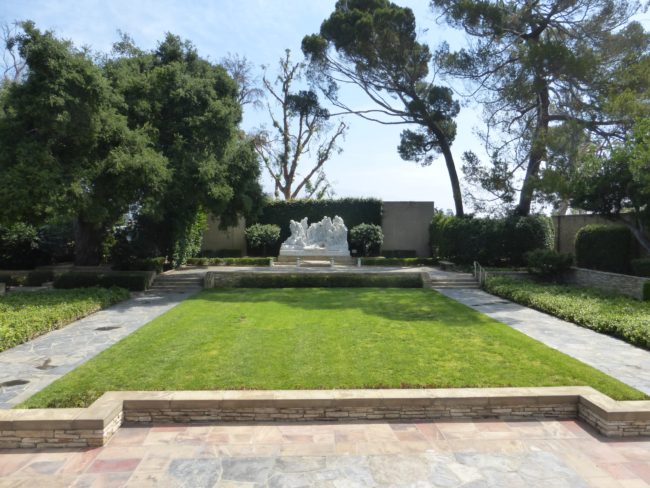
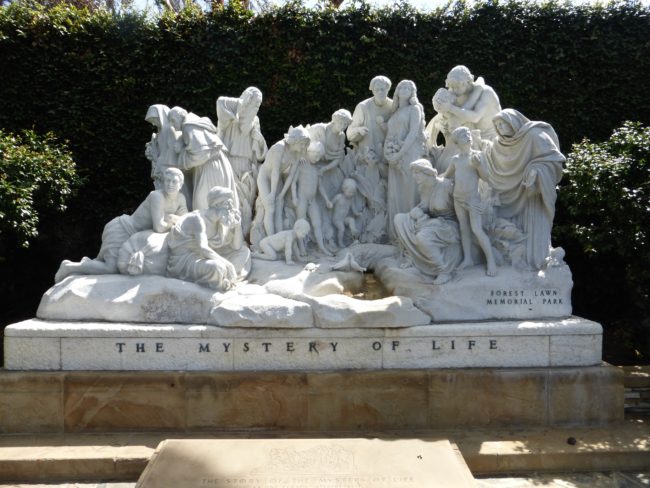 It’s situated in a beautiful courtyard (well, they all are).
It’s situated in a beautiful courtyard (well, they all are).
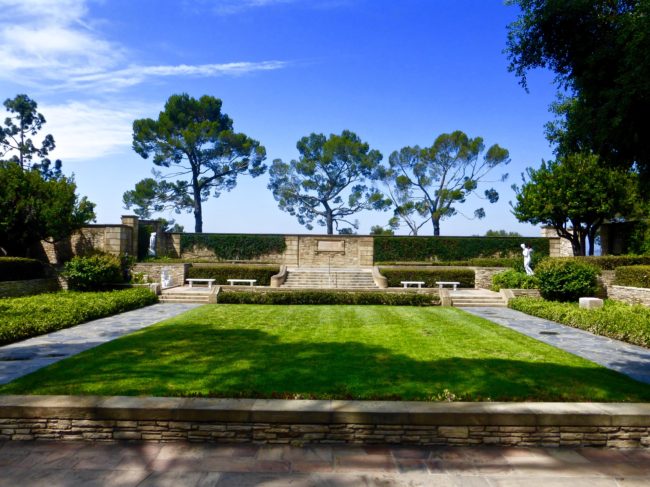 As we headed back toward the Great Mausoleum for our 11 a.m. tour, we made a quick stop at the Triumphant Faith Terraces that contain two mosaics recreating famous paintings by Raphael.
As we headed back toward the Great Mausoleum for our 11 a.m. tour, we made a quick stop at the Triumphant Faith Terraces that contain two mosaics recreating famous paintings by Raphael.
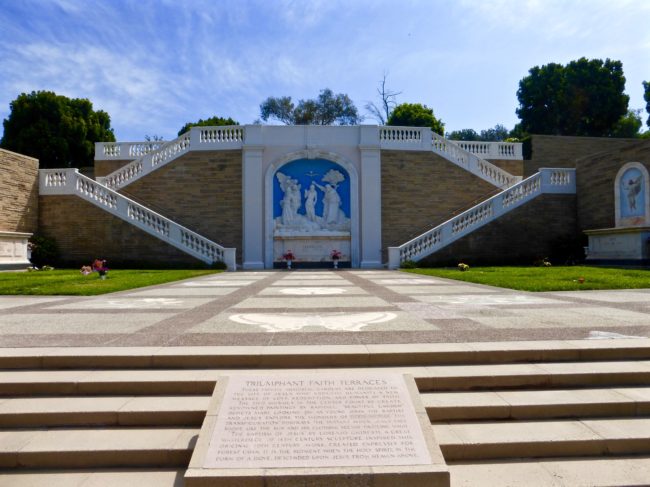 We drove by the final resting spot of someone under the Temple of Santa Sabina, which came from the 5th-century Basilica in Rome. Perched on a hill, this was truly a tomb with a view!
We drove by the final resting spot of someone under the Temple of Santa Sabina, which came from the 5th-century Basilica in Rome. Perched on a hill, this was truly a tomb with a view!
Within seconds we parked near the Great Mausoleum, where our tour would commence. Fashioned after Campo Santo, a cemetery in Genoa, Italy, the mausoleum contains numerous pieces of art and is the final resting place for such people as Clark Gable, Carole Lombard, Red Skelton, Sid Graumann and Elizabeth Taylor.
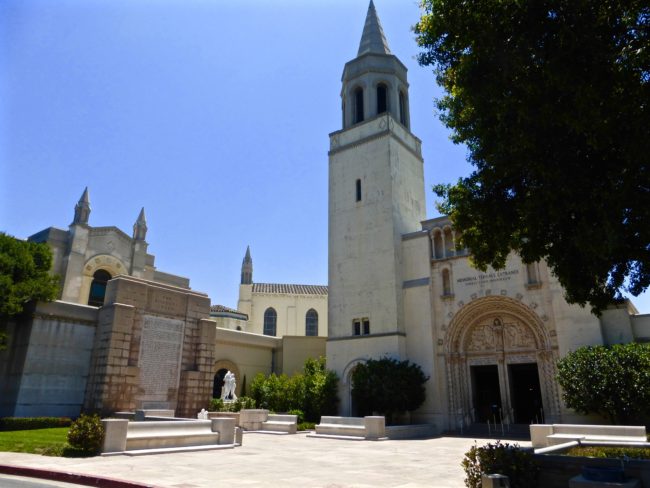 The building is a rather mishmash of Romanesque and Gothic, and is the only place in the world where you can see many of Michelangelo’s most famous sculptures side by side. We would see how his style progressed over his lifetime.
The building is a rather mishmash of Romanesque and Gothic, and is the only place in the world where you can see many of Michelangelo’s most famous sculptures side by side. We would see how his style progressed over his lifetime.
Eaton’s vision on how a cemetery should be built is written in a huge wall outside the Great Mausoleum. “The Builders Creed” was his dream. There was a cute statue in front of a couple of kids gazing up at “The Builders Creed.”
Eaton once stated, “The cemeteries of today are wrong because they depict an end, not a beginning. They have consequently become unsightly stone yards. I shall try to build at Forest Lawn a great park, devoid of misshapen monuments and other customary signs of earthly death, but filled with towering trees, sweeping lawns, splashing fountains, singing birds, beautiful statuary, cheerful flowers….”
Our group of about 15 people were met by the guide from Art Muse LA Tours, and we were off to see great works of art, all housed in one building. She parted the tour group to show us a reproduction of Michelangelo’s statue of Moses.
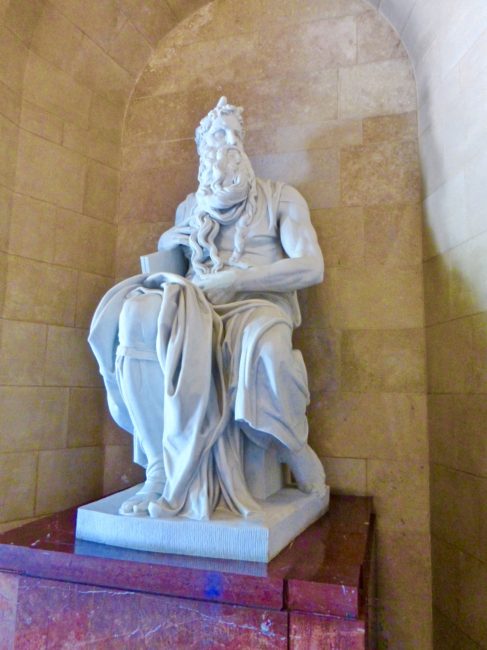 It looked familiar because Tracy and I have seen the original twice in Rome (below) located at San Pietro in Vincoli (Saint Peter in Chains). It was commissioned by Pope Julius II for his tomb.
It looked familiar because Tracy and I have seen the original twice in Rome (below) located at San Pietro in Vincoli (Saint Peter in Chains). It was commissioned by Pope Julius II for his tomb.
Our guide told us that the Vatican granted Dr. Eaton permission to make a plaster mold of the original Moses in order to sculpt the Moses here at Forest Lawn. I also hoped I wasn’t breaking the 11th commandment; “Thou shalt not take photos.” I was assured it was fine.
At the end of a long hallway…
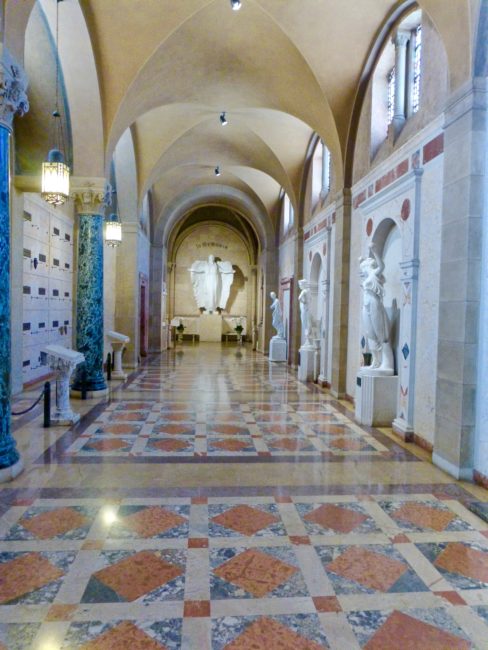 …stood a large original marble statue with the words “In Memoria” inscribed on it. This is where Elizabeth Taylor lies (she’s actually behind the crypt).
…stood a large original marble statue with the words “In Memoria” inscribed on it. This is where Elizabeth Taylor lies (she’s actually behind the crypt).
Wow! Looking to our left was a room that contains a treasure trove of art. Before we would get to the pièce de résistance of the Memorial Court Of Honor, we had some sculptures to see. Dr. Eaton envisioned the Memorial Court of Honor to be America’s version of Westminster Abbey.
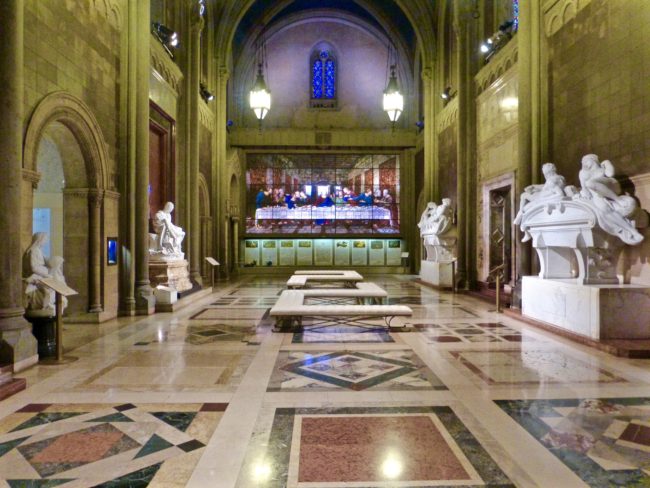 Pieces in this room include Michelangelo’s La Pietà (the original is in St. Peter’s Basilica in Vatican City). Michelangelo completed this piece at the ripe old age of 24 and is the only piece he ever signed(that light near her head is not a flash, but a light reflection…no flash allowed)…
Pieces in this room include Michelangelo’s La Pietà (the original is in St. Peter’s Basilica in Vatican City). Michelangelo completed this piece at the ripe old age of 24 and is the only piece he ever signed(that light near her head is not a flash, but a light reflection…no flash allowed)…
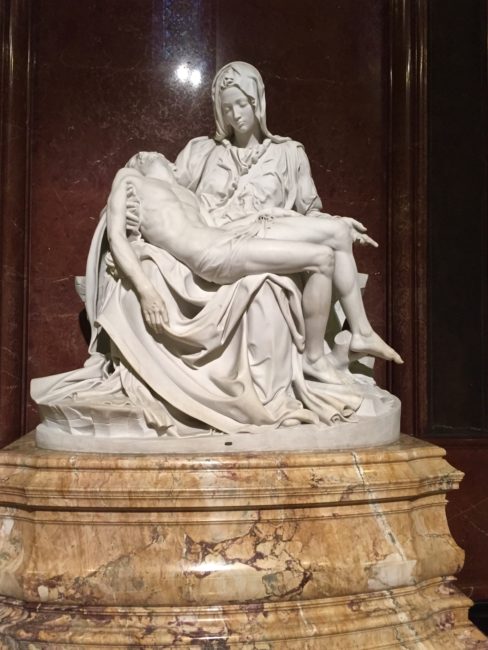 …Michelangelo’s Medici Madonna (Medici Chapel in Florence) was sculpted in 1521.
…Michelangelo’s Medici Madonna (Medici Chapel in Florence) was sculpted in 1521.
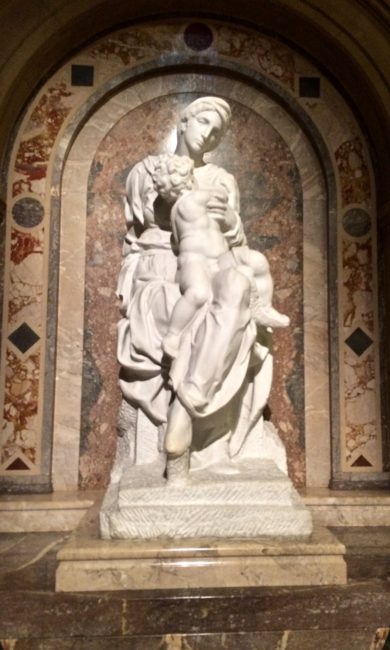 We even traveled to Belgium in this room. Michelangelo only had one piece of art leave Italy…Madonna of Bruges. It was completed four years after La Pietà and resides at Notre Dame in Bruges, Belgium.
We even traveled to Belgium in this room. Michelangelo only had one piece of art leave Italy…Madonna of Bruges. It was completed four years after La Pietà and resides at Notre Dame in Bruges, Belgium.
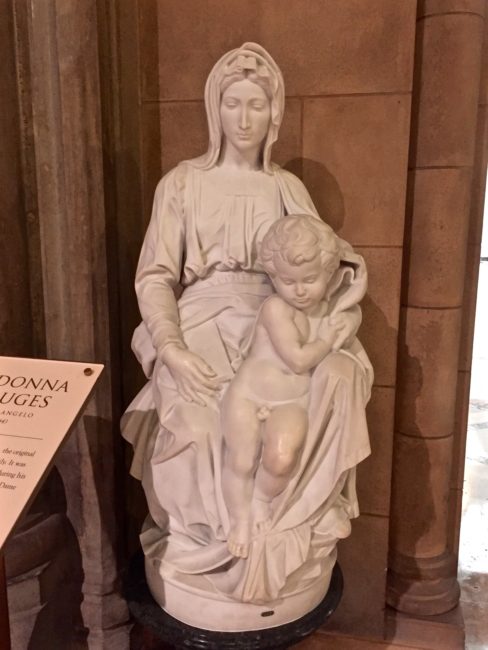 The original Twilight and Dawn, commissioned by Pope Leo X in 1520 for his family tomb, currently has a home in the New Sacristy in Florence. The reproduction is here.
The original Twilight and Dawn, commissioned by Pope Leo X in 1520 for his family tomb, currently has a home in the New Sacristy in Florence. The reproduction is here.
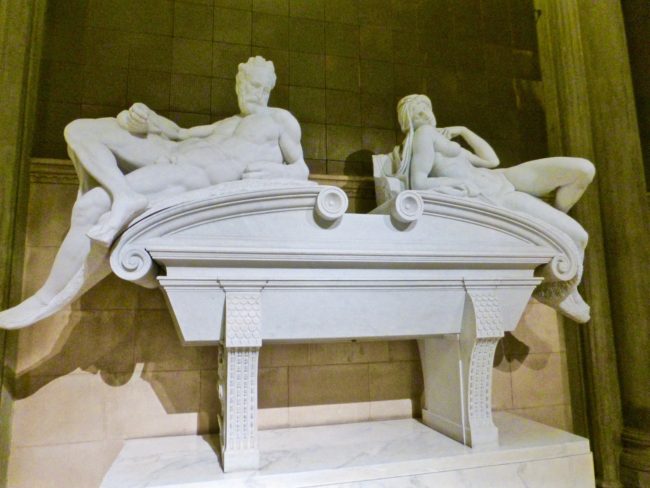 At the end of the room was the magnificent and awe-inspiring stained glass version of The Last Supper. This piece was commissioned by Dr. Eaton when he traveled to Italy in the 1920s. He was able to secure access to Da Vinci’s original sketches of The Last Supper and hired Rosa and Cecilia Moretti Caselli, whose family has been making stained glass windows since 1859 and still has a shop in Perugia, Italy, to recreate The Last Supper. It took them six years to complete the 15-foot tall and nearly 30-foot long masterpiece.
At the end of the room was the magnificent and awe-inspiring stained glass version of The Last Supper. This piece was commissioned by Dr. Eaton when he traveled to Italy in the 1920s. He was able to secure access to Da Vinci’s original sketches of The Last Supper and hired Rosa and Cecilia Moretti Caselli, whose family has been making stained glass windows since 1859 and still has a shop in Perugia, Italy, to recreate The Last Supper. It took them six years to complete the 15-foot tall and nearly 30-foot long masterpiece.
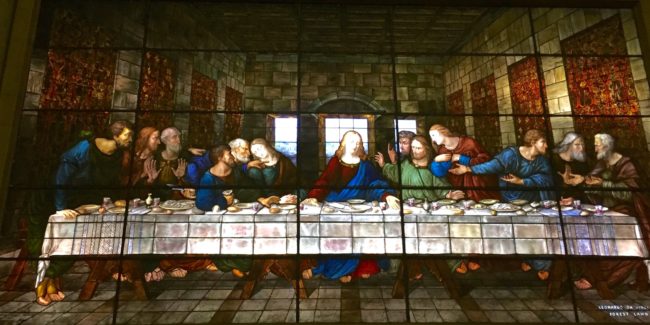 You can see this without taking a tour. If you stop in the Great Mausoleum, every half hour mechanical shutters open so you can can take it in all its grandeur…complete with sound effects, and a voice that relates the story of The Last Supper.
You can see this without taking a tour. If you stop in the Great Mausoleum, every half hour mechanical shutters open so you can can take it in all its grandeur…complete with sound effects, and a voice that relates the story of The Last Supper.
As stated, Eaton wanted The Memorial Court of Honor to be the “American Westminster Abbey.” Interred here under The Last Supper are many notables including Jan Styka, whose large painting we would see at the end of our day…
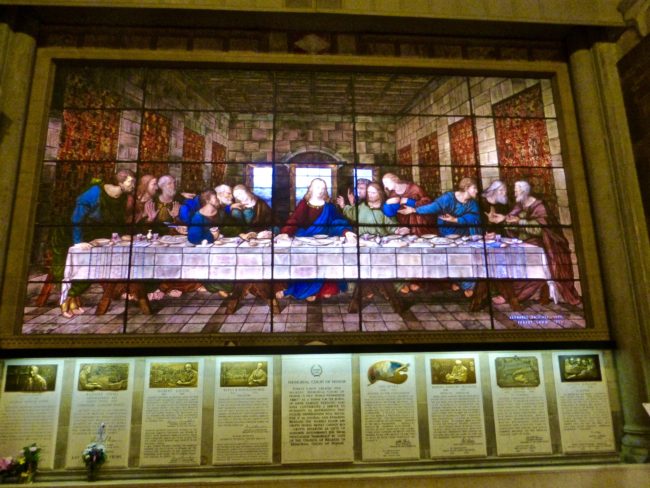 …and Gutzon Borglum, the sculptor of Mt. Rushmore.
…and Gutzon Borglum, the sculptor of Mt. Rushmore.
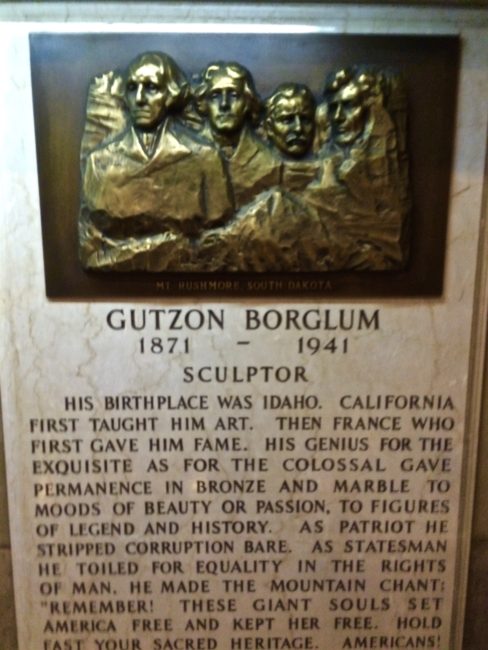 There’s also a side chapel where Dr. Eaton is interred. Near this room is a sanctuary where Clark Gable and his wife, actress Carole Lombard are interred, but you risk being thrown out if you go past the chain to where they reside in eternity.
There’s also a side chapel where Dr. Eaton is interred. Near this room is a sanctuary where Clark Gable and his wife, actress Carole Lombard are interred, but you risk being thrown out if you go past the chain to where they reside in eternity.
Heading to an adjacent room and walking past Elizabeth Taylor we spied the Sanctuary of Benediction. Red Skelton, Sid Grauman (Grauman’s Chinese Theater) reside here, along with actress Jean Harlow.
We walked toward the Paradise Sarcophagus. This gets its name for the famed Paradise Doors of Lorenzo Ghiberti at the Battistero di San Giovanni in Florence (it’s actually pretty cool that we have visited nearly every place all these masterpieces are located). The original doors in Florence were removed in 1990 for safekeeping and so they could be restored.
To the right we entered the Sanctuary of Memory and headed toward a gorgeous stained glass window beckoning from the end of the hallway.
If memory serves me, this is The Memory Window by Charles J. Connick. It was commissioned in 1941. After it was completed, Connick said, “Nothing I have done in the past can approach it, and I know that I shall never again equal it.”
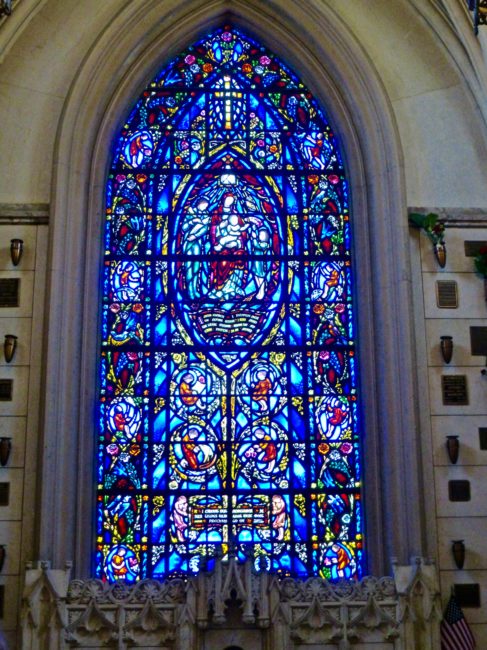 We made a quick stop at one more sanctuary, the Sanctuary of the Vespers…
We made a quick stop at one more sanctuary, the Sanctuary of the Vespers…
…and headed downstairs past Antonio Canova’s Three Graces, who were said to represent “beauty, charm and joy.”
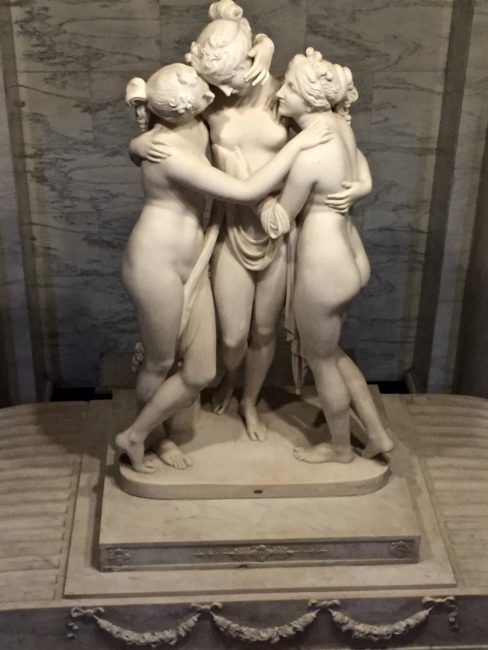 The Poet’s Corridor was our destination. Each window is based upon a poem.
The Poet’s Corridor was our destination. Each window is based upon a poem.
It was a nice final stop on our mortuary art tour.
Back outside, we were told that if we walked under the bridge, we could see where Michael Jackson was laid to rest.
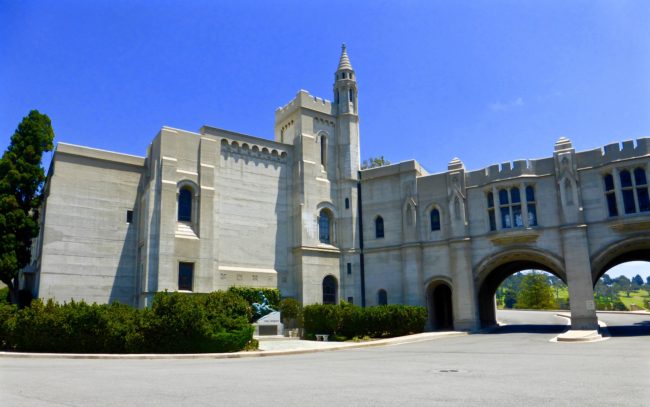 We passed by the statue and final resting place of actor Jean Hersholt…
We passed by the statue and final resting place of actor Jean Hersholt…
..and made our way to Holly Terrace. Somewhere behind those doors is the “gloved one.”
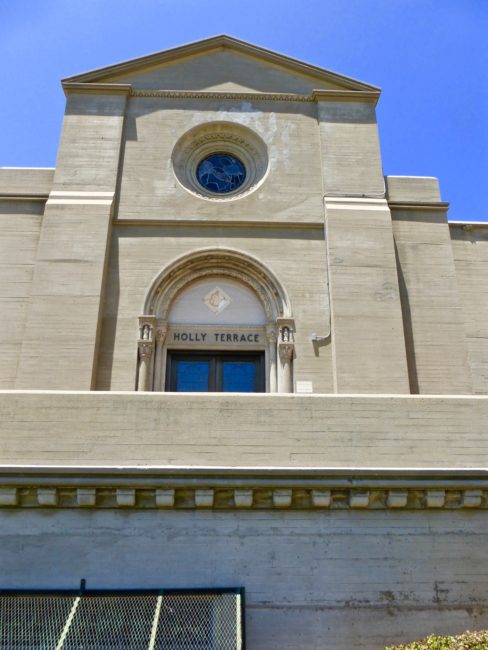 It is forbidden to enter, and I assumed if we tried, someone would yell, “Beat It!”
It is forbidden to enter, and I assumed if we tried, someone would yell, “Beat It!”
 We thought that would be about it, but as it turned out we weren’t even halfway through our Forest Lawn experience. Or as the late, great pitchman Billy Mays would say, “But wait..there’s more!”
We thought that would be about it, but as it turned out we weren’t even halfway through our Forest Lawn experience. Or as the late, great pitchman Billy Mays would say, “But wait..there’s more!”
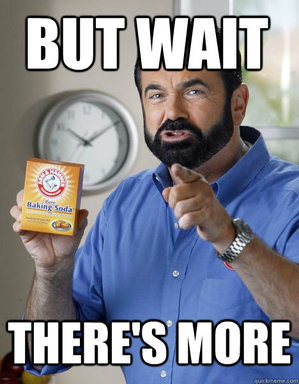 Looking down from where Michael Jackson is buried, there was quite a monument below. I thought about walking down the steep hill, but not wanting Forest Lawn to be my final resting pace on this day, we drove to the elaborate grave of Amy Semple McPherson, who founded the Foursquare (not the Facebook app) Church. She led quite an interesting life, so much so that 45,000 people filed past her coffin when she lied in state, and 11 trucks were needed to transport $50,000 worth of flowers to her funeral.
Looking down from where Michael Jackson is buried, there was quite a monument below. I thought about walking down the steep hill, but not wanting Forest Lawn to be my final resting pace on this day, we drove to the elaborate grave of Amy Semple McPherson, who founded the Foursquare (not the Facebook app) Church. She led quite an interesting life, so much so that 45,000 people filed past her coffin when she lied in state, and 11 trucks were needed to transport $50,000 worth of flowers to her funeral.
Next we made a quick stop at Lullaby Land, a section reserved for infants and small children.
Back in the car, we headed toward The Court Of The Republic. Stepping out, the first thing we saw in the Court Of Immortality was the humongous (and aptly named) Colossal Statue (aka “The Republic”). It was made by Daniel Chester French, who also created the Lincoln statue at the Lincoln Memorial in Washington, D.C.
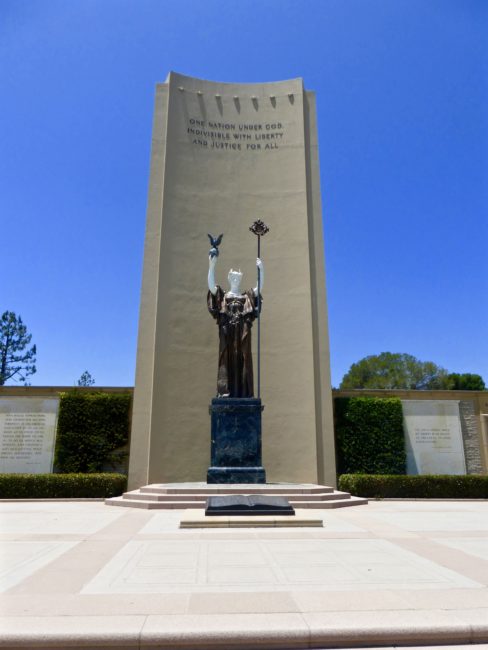 Nearby was a plaque bearing the name of someone that baseball fans know well, famed manager of the New York Yankees Charles (better known as Casey) Stengel. There was a friendly, yet rather large lizard on the wall nearby; obviously a Yankees’ fan.
Nearby was a plaque bearing the name of someone that baseball fans know well, famed manager of the New York Yankees Charles (better known as Casey) Stengel. There was a friendly, yet rather large lizard on the wall nearby; obviously a Yankees’ fan.
We walked across the Court of Freedom…
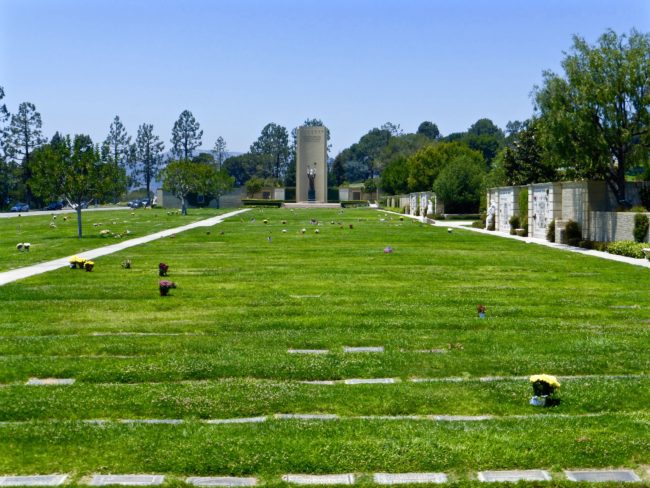 …and our next statue looked pretty familiar ( for a couple of reasons). One reason was obvious; it’s a bronze statue of George Washington.
…and our next statue looked pretty familiar ( for a couple of reasons). One reason was obvious; it’s a bronze statue of George Washington.
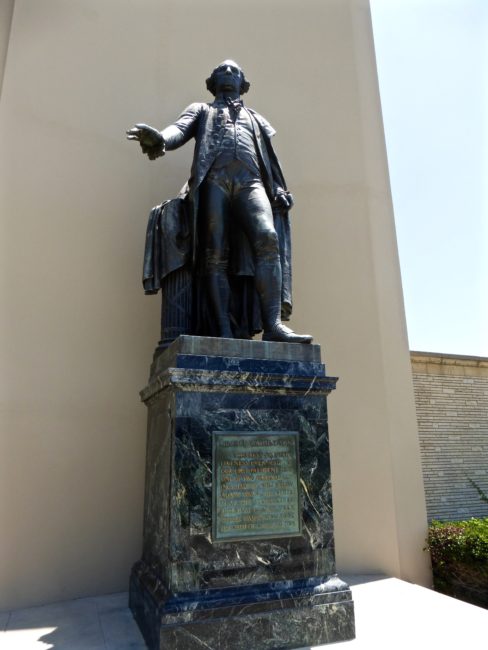 The other; we had seen the original (both created by John Quincy Adams Ward) in 2011, which is located in front of the sub-Treasury Building in New York City where Washington took his oath of office. The one at Forest Lawn is the only reproduction in existence.
The other; we had seen the original (both created by John Quincy Adams Ward) in 2011, which is located in front of the sub-Treasury Building in New York City where Washington took his oath of office. The one at Forest Lawn is the only reproduction in existence.
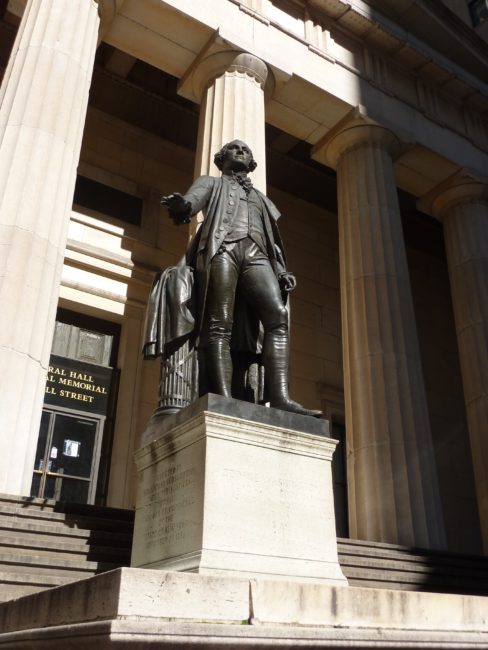 In front of the statue is the Liberty Chain. Some people say these links are actually the ones from the chain that “stretched across the Hudson River in 1776 to prevent the passage of British ships.”
In front of the statue is the Liberty Chain. Some people say these links are actually the ones from the chain that “stretched across the Hudson River in 1776 to prevent the passage of British ships.”
On the backside of the Washington statue is one that is dedicated to all who served in our armed forces. Flowers for Memorial Day were still piled up in front of the statue.
We stepped inside the patriotic Freedom Mausoleum, containing a number of stained glass widows.
These windows depict historic events and people.
After taking a quick glance at the niche containing the great entertainer Nat King Cole…
we made our way to the Patriot’s Palace to see the niche of the one person I wanted to visit…one of my childhood favorites… Larry Fine of Three Stooges fame. He was a little hard to find (I almost started pulling my hair out), but finally we located him.
Back outside, very near the mausoleum is a small garden. We opened the gate and found the final resting place of Walt Disney and his wife. You’ll know you’re in the correct garden when you see a statue of the Little Mermaid.
A short walk took us to the Garden of Everlasting Peace. There were lots of famous people buried in this little courtyard. “The plots thicken,” I told Tracy, who buried her head in her hands.
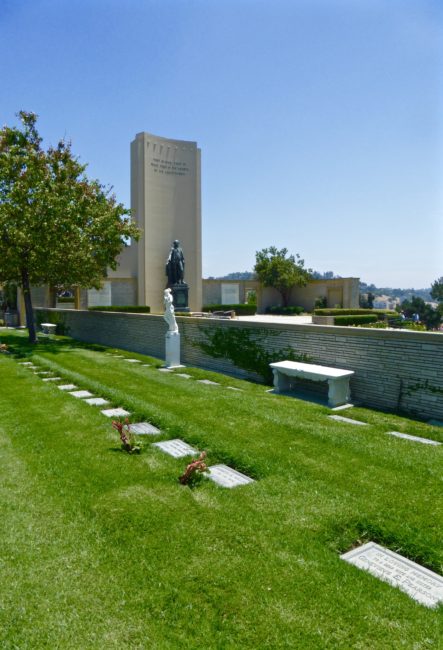 It was here we visited swashbuckling Errol Flynn…
It was here we visited swashbuckling Errol Flynn…
Television’s Lone Ranger, Clayton Moore (RIP Kemosabe). I was sorry he didn’t have it made out of Silver (not the horse, of course)…
…and the very worn plaque of Spencer Tracy, located in a corner garden. Somebody needs to get Boys Town to send some money and get that fixed up.
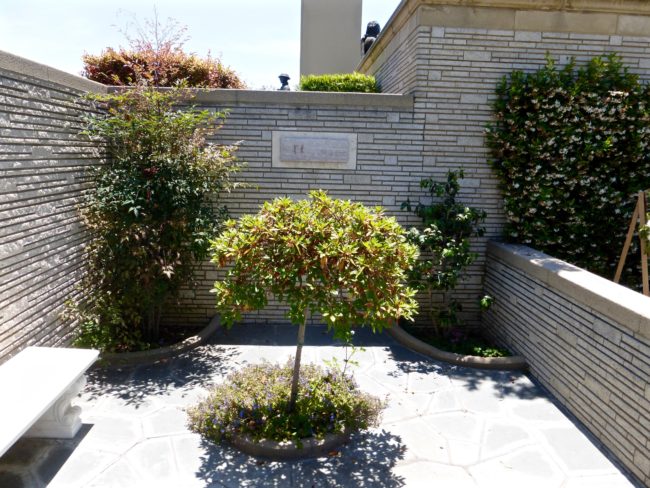 I don’t know who McMillan was, but there was was quite a monument to him or her. Or perhaps, it was McMillan and Wife.
I don’t know who McMillan was, but there was was quite a monument to him or her. Or perhaps, it was McMillan and Wife.
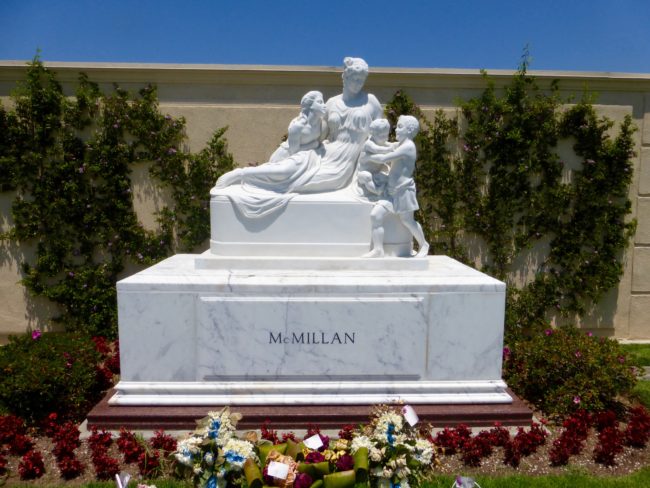 Stepping back out into the Freedom Courtyard and in the course of human events, we saw an incredibly large mosaic, “The Signing of the Declaration of Independence” by John Trumbull. If you want to see the original in your pursuit of life, liberty and happiness, take a trip to Washington DC where you’ll find the painting hanging in the Rotunda of the U.S. Capitol Building.
Stepping back out into the Freedom Courtyard and in the course of human events, we saw an incredibly large mosaic, “The Signing of the Declaration of Independence” by John Trumbull. If you want to see the original in your pursuit of life, liberty and happiness, take a trip to Washington DC where you’ll find the painting hanging in the Rotunda of the U.S. Capitol Building.
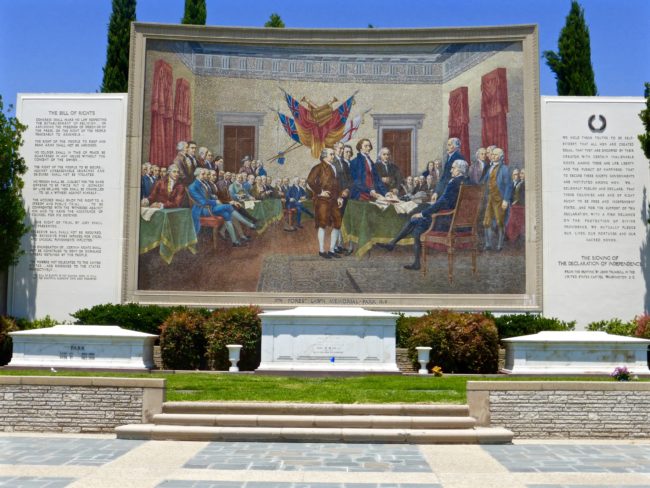 We found an open gate and wandered into The Garden Of Honor (this is my story, and I’m sticking to it) a place in all honesty I thought would be locked according to all reports. It was strikingly peaceful and beautiful.
We found an open gate and wandered into The Garden Of Honor (this is my story, and I’m sticking to it) a place in all honesty I thought would be locked according to all reports. It was strikingly peaceful and beautiful.
We strolled by the Columbarium Of The Evening Star.
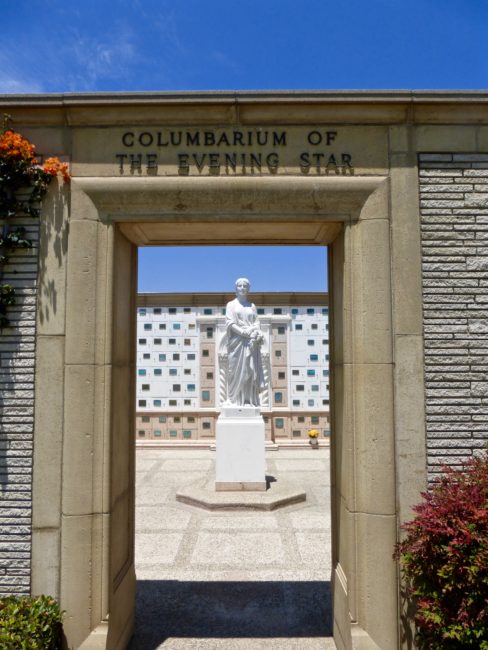 There are lots of famous people buried here, but we didn’t really look very hard because there were some gorgeous final resting places…
There are lots of famous people buried here, but we didn’t really look very hard because there were some gorgeous final resting places…
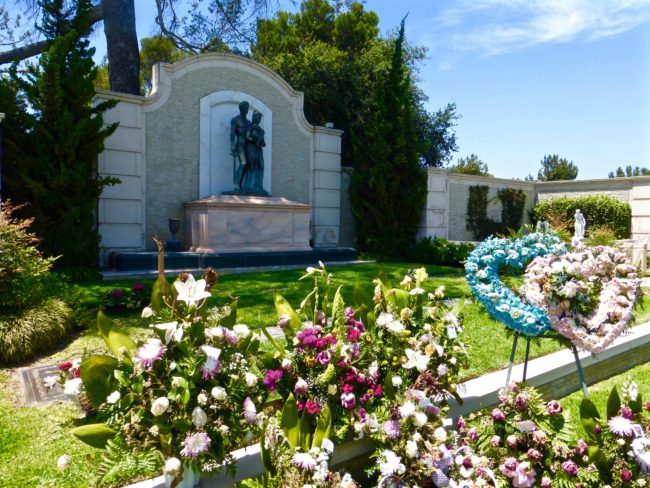 There was also one more president to give our regards to as we walked through. We admired Enzo Pasquini’s 17-foot high bronze statue of our third president, and it was time to leave this area for one last stop on our now long cemetery excursion.
There was also one more president to give our regards to as we walked through. We admired Enzo Pasquini’s 17-foot high bronze statue of our third president, and it was time to leave this area for one last stop on our now long cemetery excursion.
We drove to the museum to view the one of the largest religious paintings in existence, but not before we thought we had been transported to Great Britain.
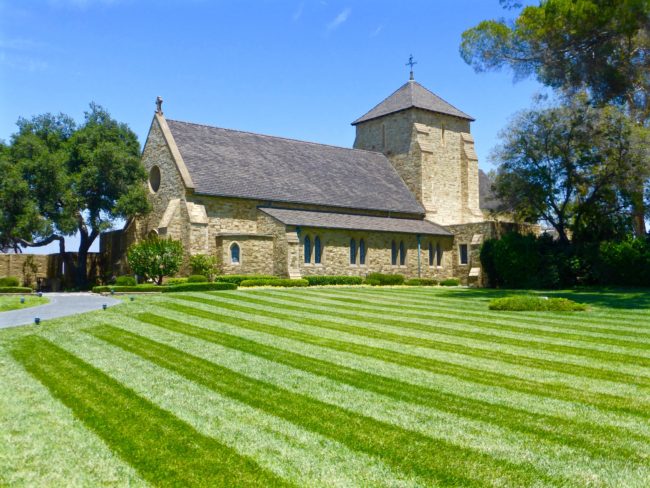 After parking, we took a short walk over to a church that looked like it had been plucked out of the English countryside.
After parking, we took a short walk over to a church that looked like it had been plucked out of the English countryside.
In 1939, Dr. Eaton built the Church of the Recessional, a reproduction of the Parish Church of St. Margaret in Rottingdean, England. It was such a good reproduction I felt like sitting down for some fish & chips and a Guinness.
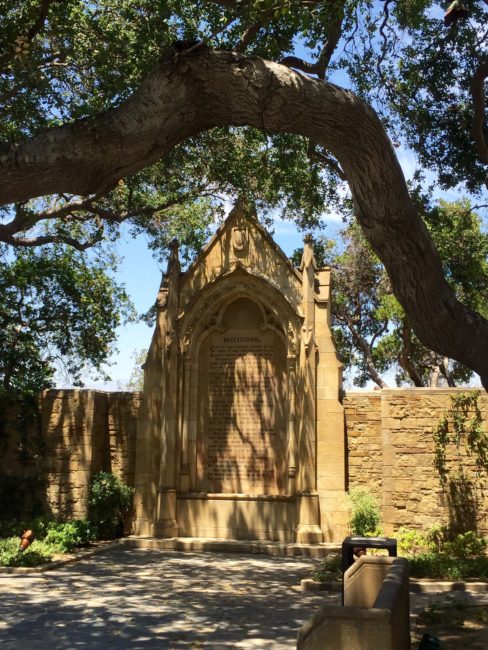
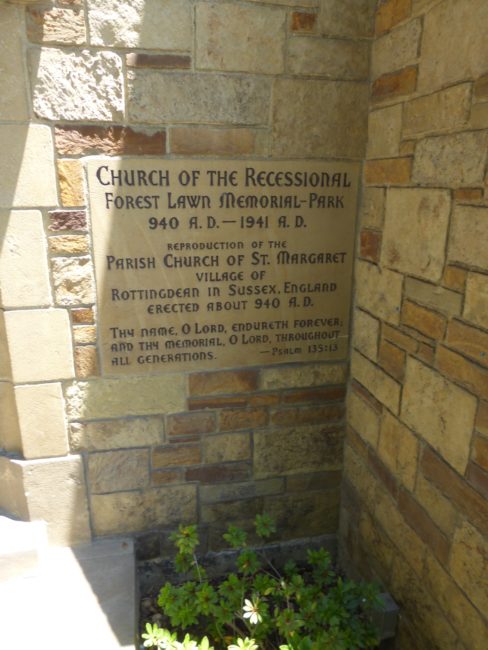 However, there was no time for that…it was only a few minutes before we would have the opportunity to witness the “largest religious painting in the Western Hemisphere.” We entered the Hall of the Crucifixion-Resurrection. Eaton constructed this 1,000-seat to display The Crucifixion by Polish artist Jan Styka.
However, there was no time for that…it was only a few minutes before we would have the opportunity to witness the “largest religious painting in the Western Hemisphere.” We entered the Hall of the Crucifixion-Resurrection. Eaton constructed this 1,000-seat to display The Crucifixion by Polish artist Jan Styka.
“The Crucifixion” measures 195 feet in length and is 45-feet tall, and Styka’s palette was even blessed by Pope Leo XIII (photo from internet).
 A 20-minute film accompanies its showing, along with a companion piece Eaton commissioned. “The Resurrection” by Robert Clark (also from the internet), supposedly the second largest religious painting in the Western Hemisphere, was completed in 1965.
A 20-minute film accompanies its showing, along with a companion piece Eaton commissioned. “The Resurrection” by Robert Clark (also from the internet), supposedly the second largest religious painting in the Western Hemisphere, was completed in 1965.
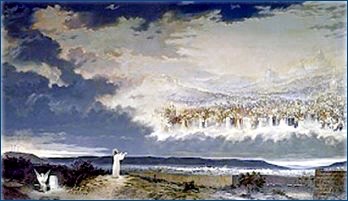 According to the movie, Styka’s painting was supposed to travel to the 1904 St, Louis Exposition. However, the painting was confiscated thanks to Styka’s American partners having failed to pay customs taxes (sadly, Styka never saw his masterpiece again). The painting was not seen again until 1944 when it was found rolled around a telephone pole and badly damaged, having sat in the basement of the Chicago Civic Light Opera Company for all those years. It was restored by Styka’s son, Adam.
According to the movie, Styka’s painting was supposed to travel to the 1904 St, Louis Exposition. However, the painting was confiscated thanks to Styka’s American partners having failed to pay customs taxes (sadly, Styka never saw his masterpiece again). The painting was not seen again until 1944 when it was found rolled around a telephone pole and badly damaged, having sat in the basement of the Chicago Civic Light Opera Company for all those years. It was restored by Styka’s son, Adam.
Upon exiting, we saw the beautiful Rose window…
…and Our Lady of Guadalupe.
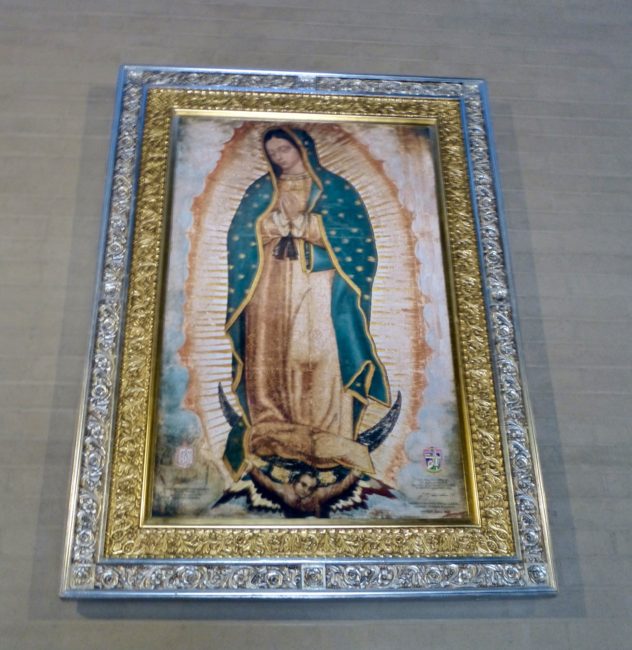 …while outside in the courtyard, we ran into Eve, who was enjoying the view on a slightly hazy day…
…while outside in the courtyard, we ran into Eve, who was enjoying the view on a slightly hazy day…
…and a few other statues…
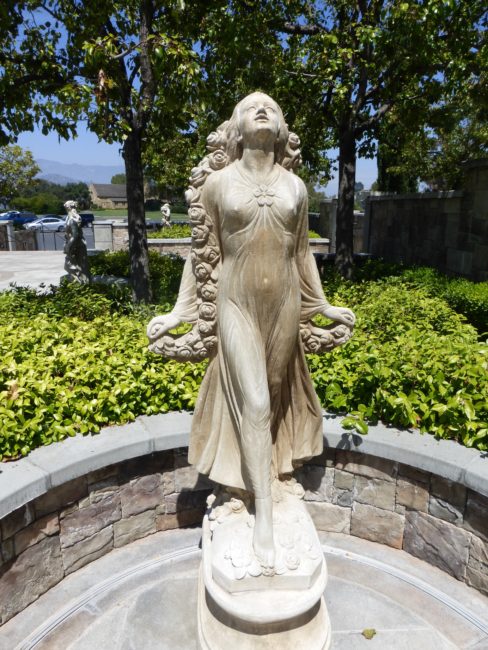 Quickly, we stopped into the museum, where finally the Camera Patrol caught up with me. After taking a quick photo of those famous Florence doors from earlier, I heard the words I dread, “No photos.”
Quickly, we stopped into the museum, where finally the Camera Patrol caught up with me. After taking a quick photo of those famous Florence doors from earlier, I heard the words I dread, “No photos.”
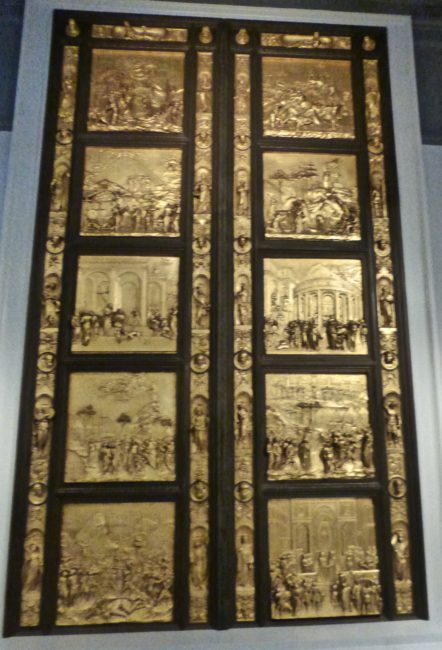 We thought that was it, but as it turned out, we had one more quick stop along the way. As we drove out, to our left was a large burial spot with a guy holding a bow and arrow (grave says “Taylor”). Thanks to seeingstars.com, Tracy remembered that Jimmy Stewart was buried nearby.
We thought that was it, but as it turned out, we had one more quick stop along the way. As we drove out, to our left was a large burial spot with a guy holding a bow and arrow (grave says “Taylor”). Thanks to seeingstars.com, Tracy remembered that Jimmy Stewart was buried nearby.
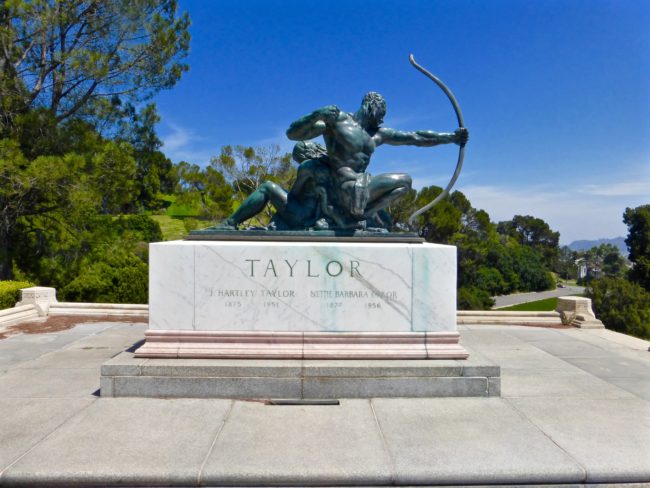 Up the hill we trudged, and sure enough, just like the website stated, there was the grave of Jimmy Stewart, movie star and Army Air Force pilot. Four American flags were in the ground around his grave.
Up the hill we trudged, and sure enough, just like the website stated, there was the grave of Jimmy Stewart, movie star and Army Air Force pilot. Four American flags were in the ground around his grave.
Looks like he really did have “A Wonderful Life.”
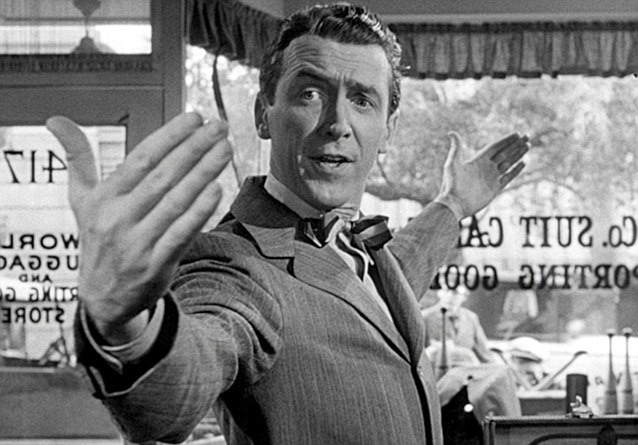 Looking down a hill, we saw the Wee Kirk o’ the Heather church, where we had started this little cemetery adventure more than four hours before.
Looking down a hill, we saw the Wee Kirk o’ the Heather church, where we had started this little cemetery adventure more than four hours before.
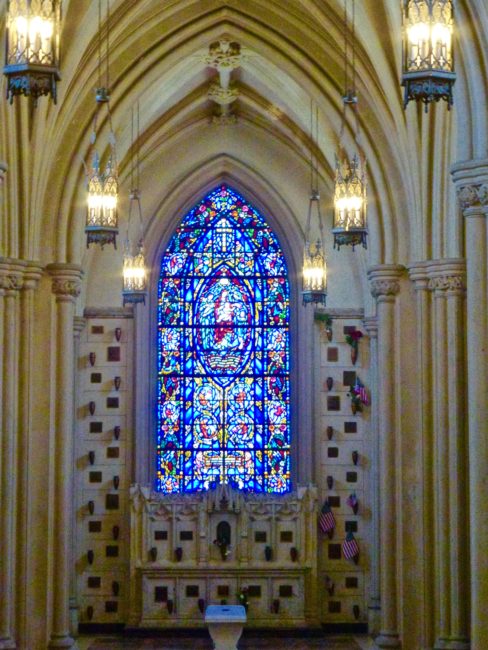 We couldn’t believe the amount of stupendous art and architecture we saw in those four hours, and there was still a lot to be discovered, but four hours at a cemetery is about my limit until…well, you know when. Certainly there are other cemeteries more user-friendly in locating graves and sights to see (check out my Hollywood Forever report in California Dreaming), but they also don’t have as many unique artifacts as they have here. If you take the time (hopefully while you’re still alive), a journey to Forest Lawn Glendale is well worth the effort.
We couldn’t believe the amount of stupendous art and architecture we saw in those four hours, and there was still a lot to be discovered, but four hours at a cemetery is about my limit until…well, you know when. Certainly there are other cemeteries more user-friendly in locating graves and sights to see (check out my Hollywood Forever report in California Dreaming), but they also don’t have as many unique artifacts as they have here. If you take the time (hopefully while you’re still alive), a journey to Forest Lawn Glendale is well worth the effort.
Forest Lawn Glendale
712 S Glendale Avenue
Glendale, California 91205
Phone: 800.204.3131
Hours: 8 a.m. – 5 p.m.
Website: forestlawn.com/glendale/
Check website for tours

